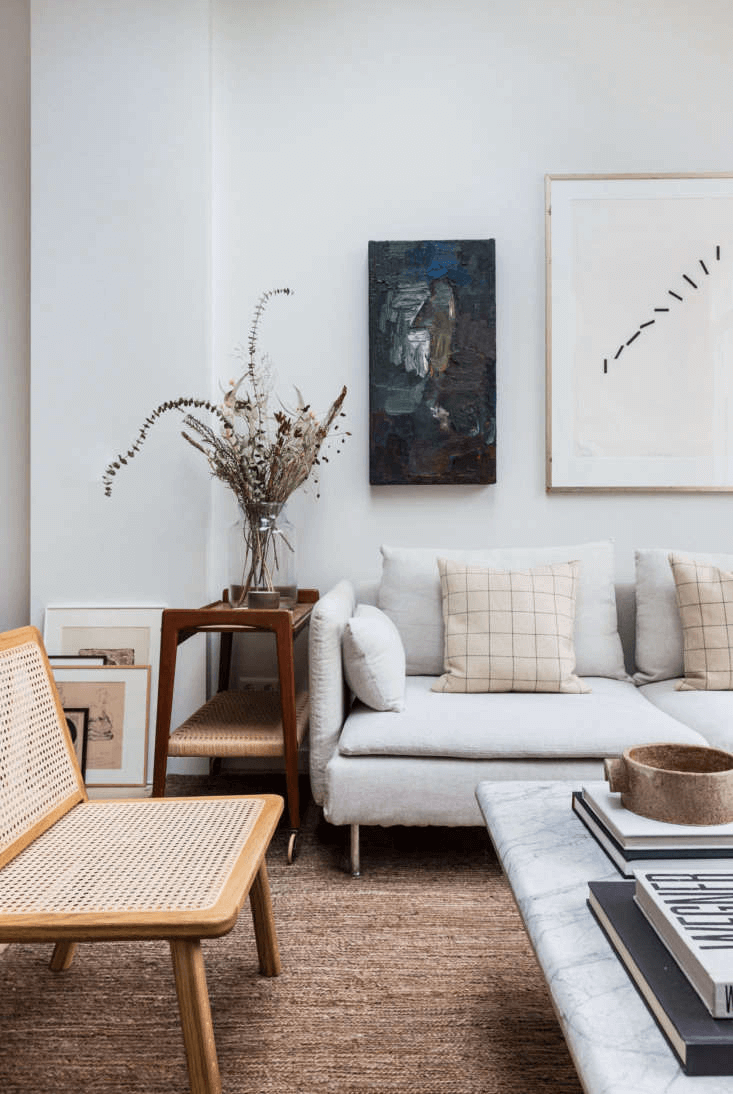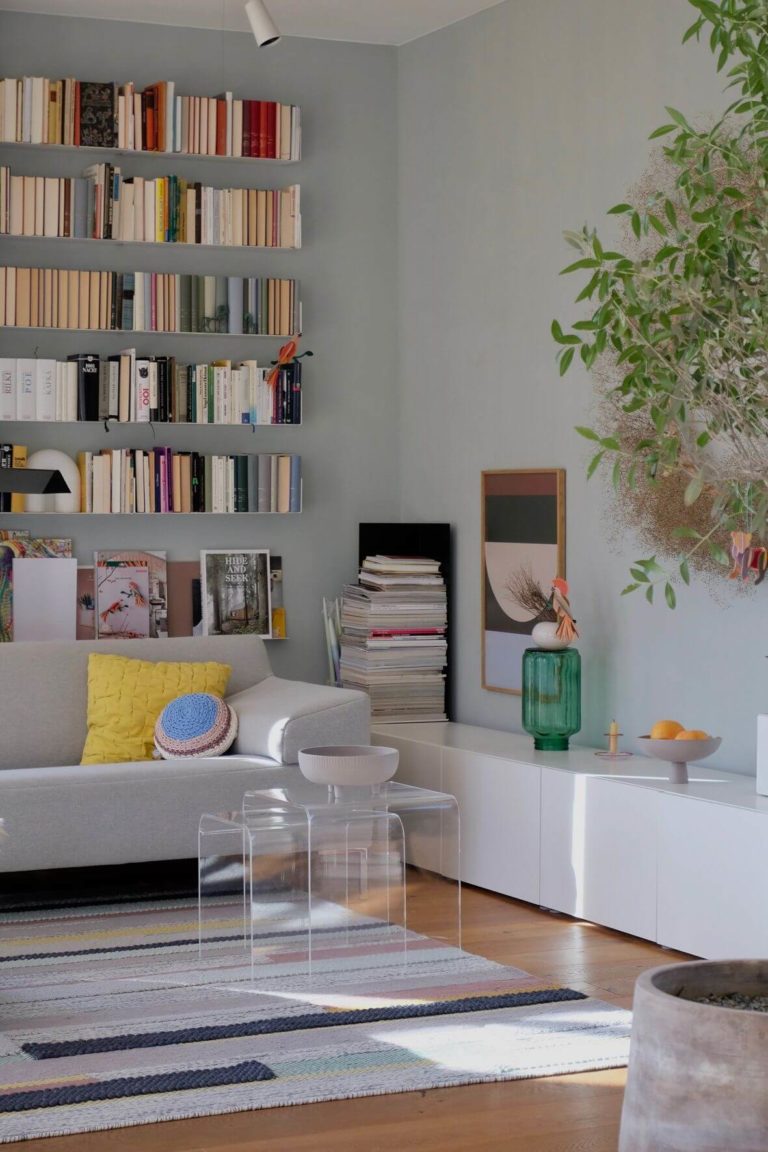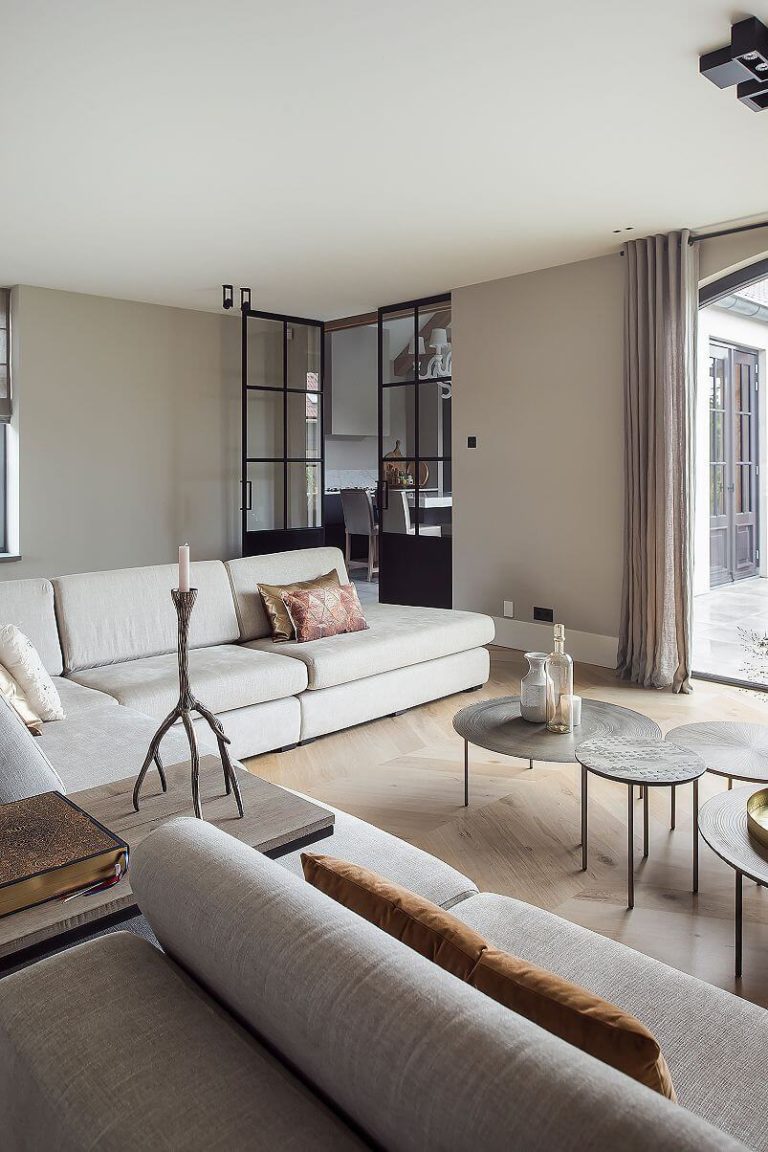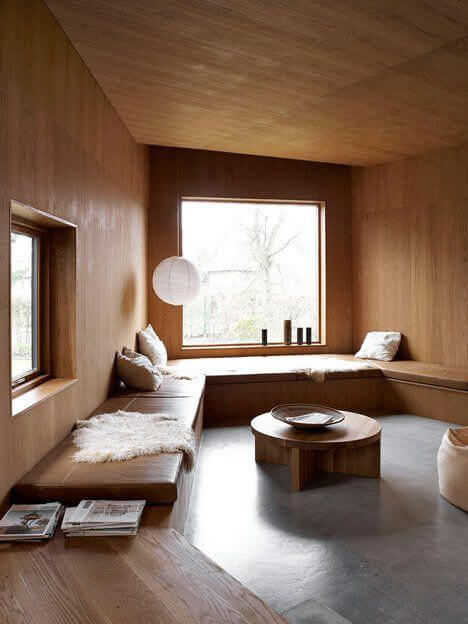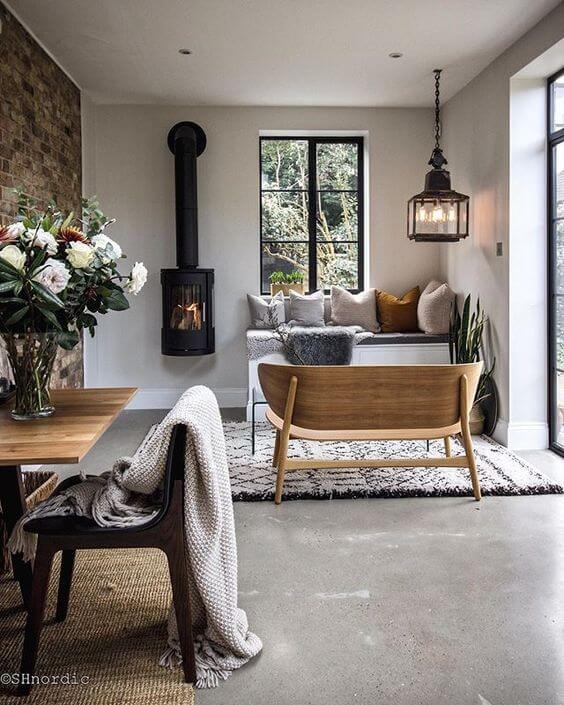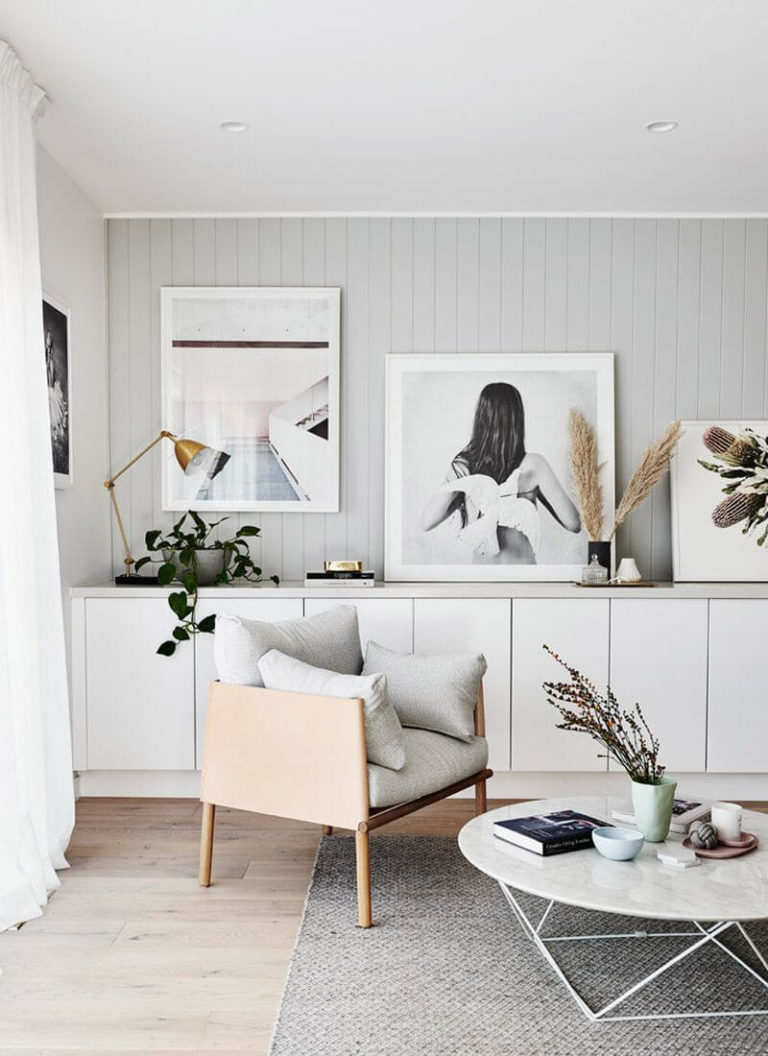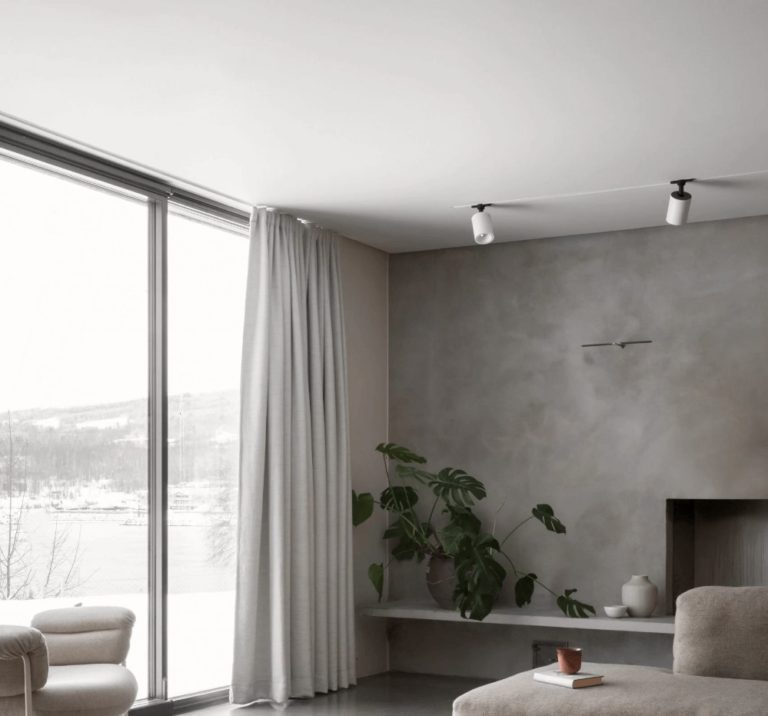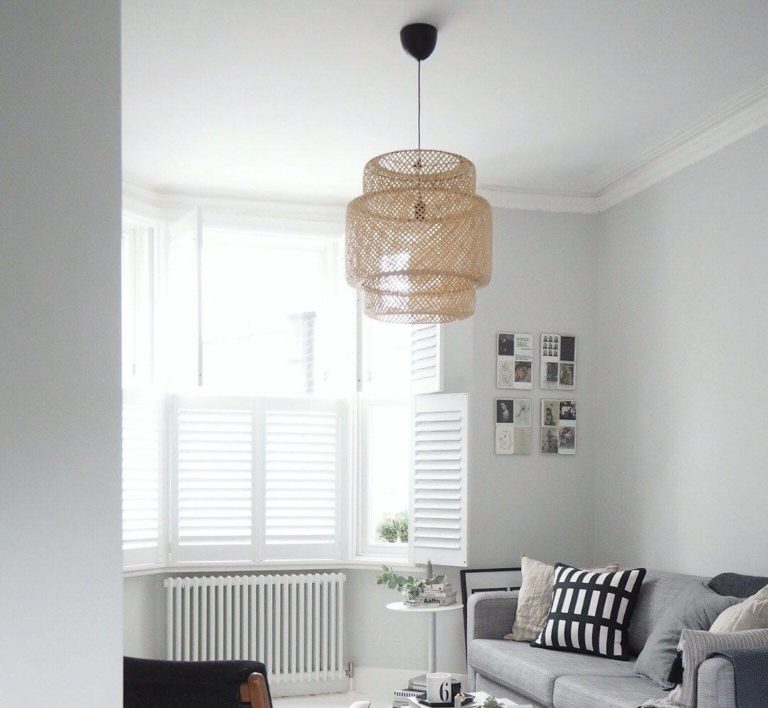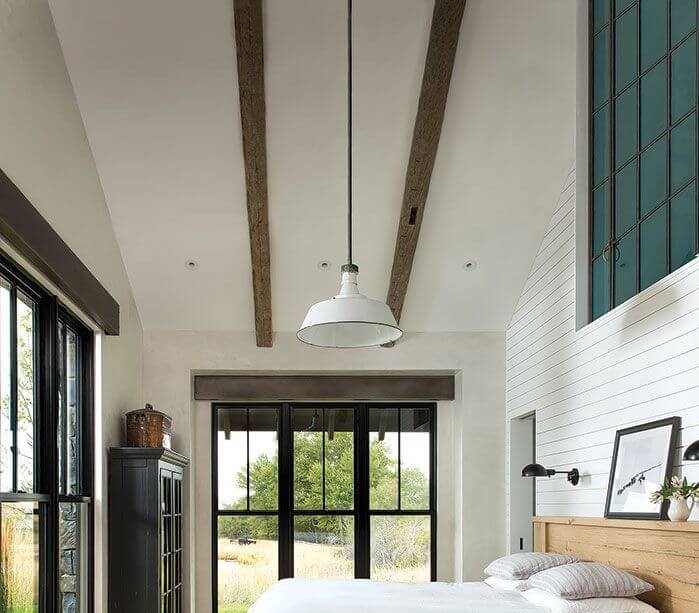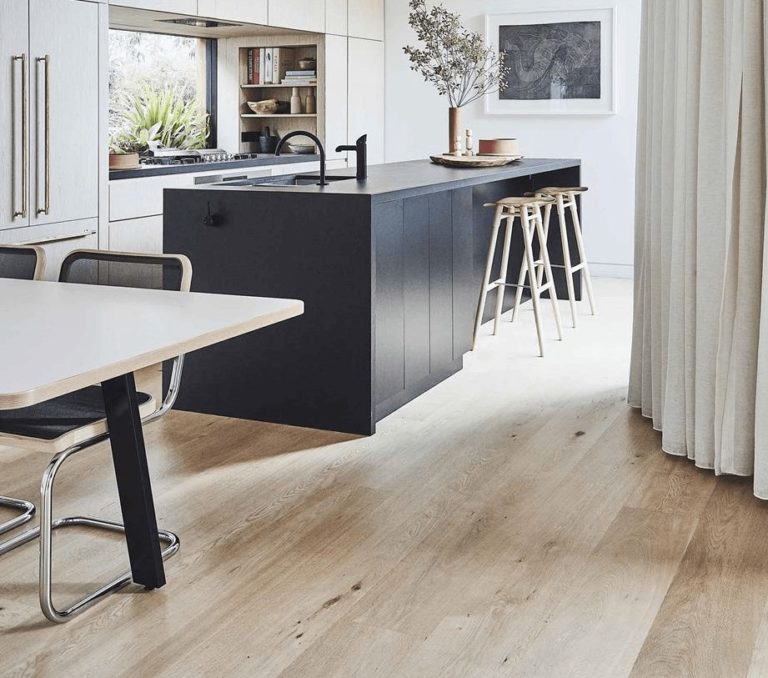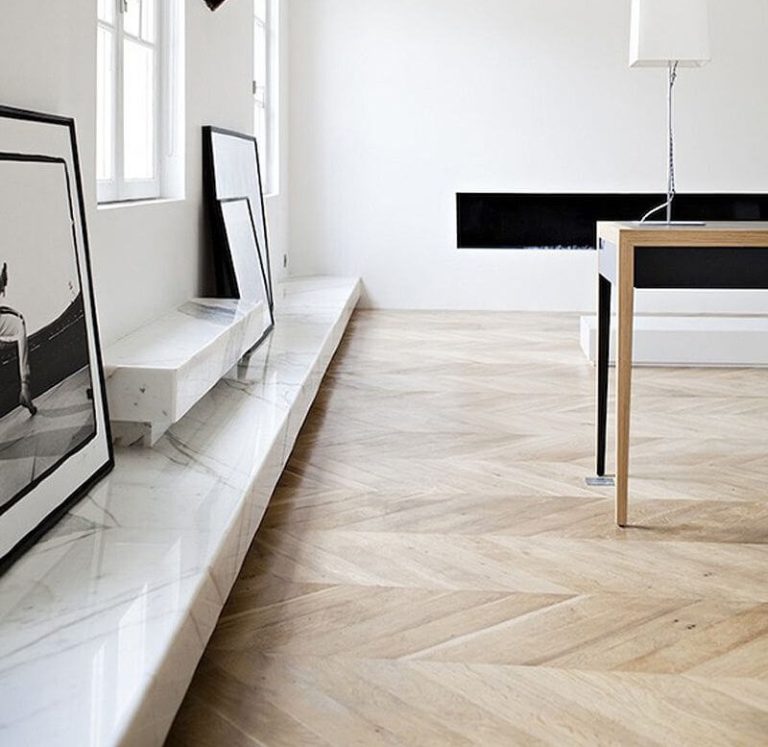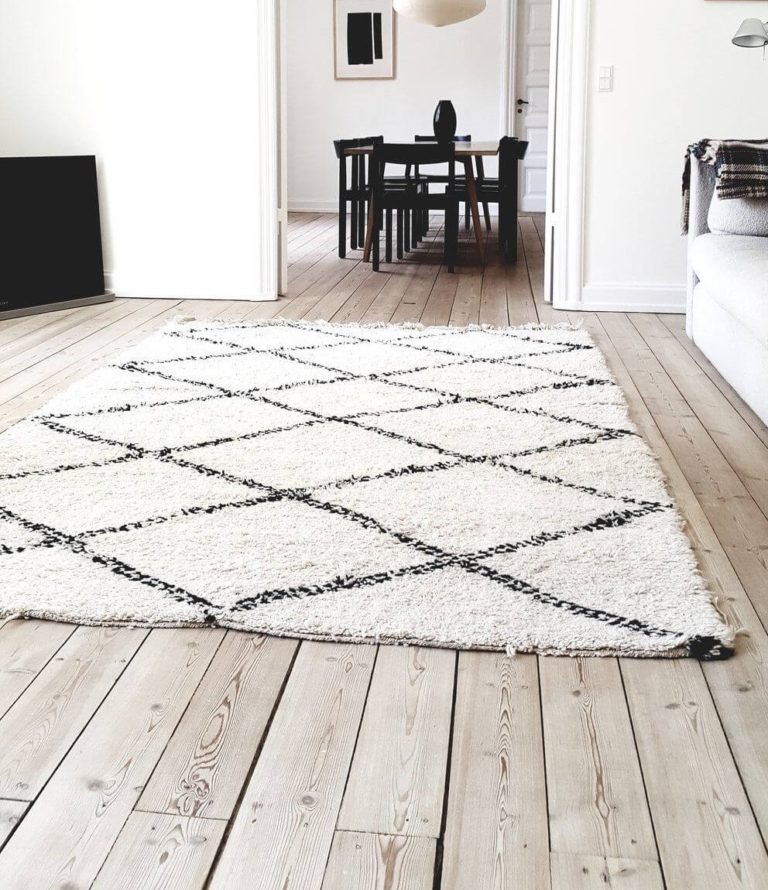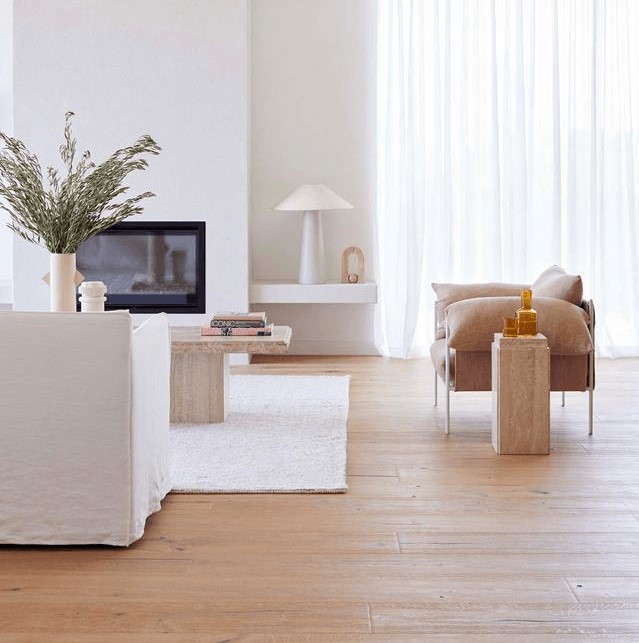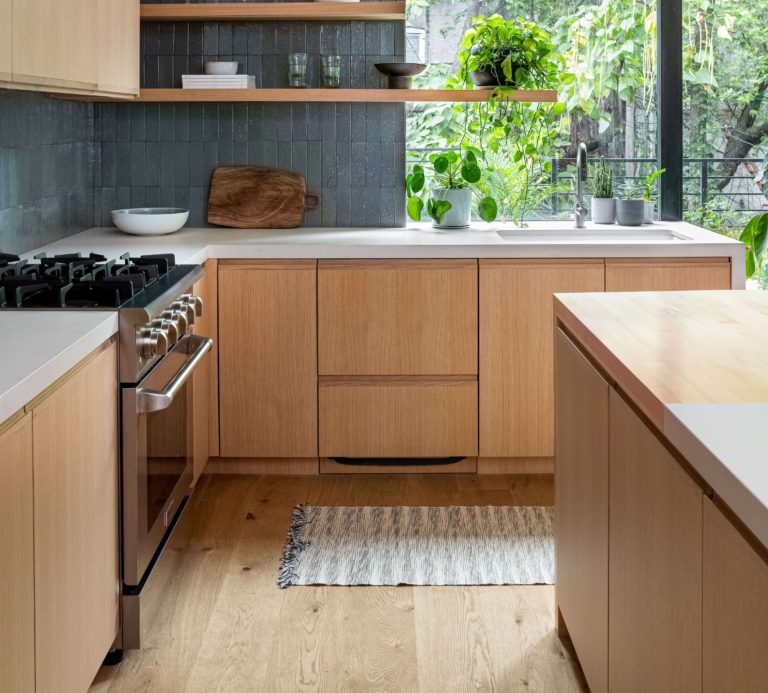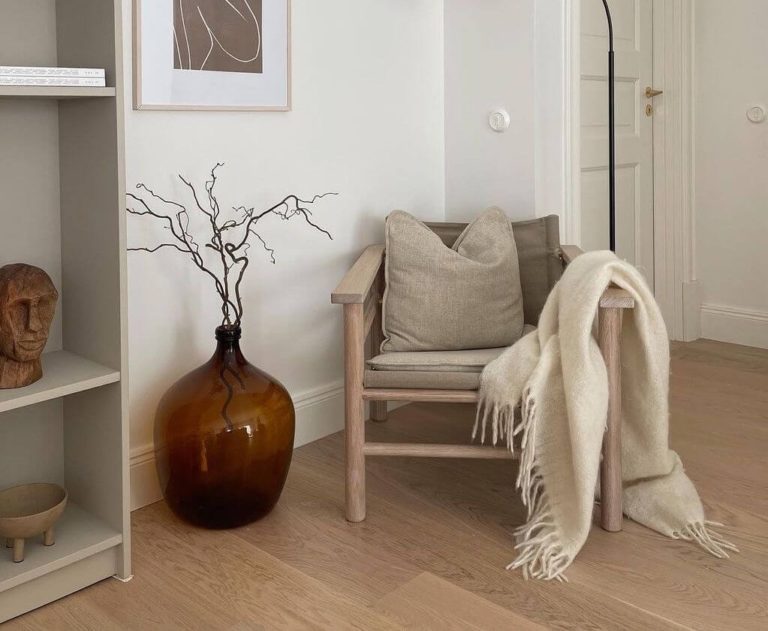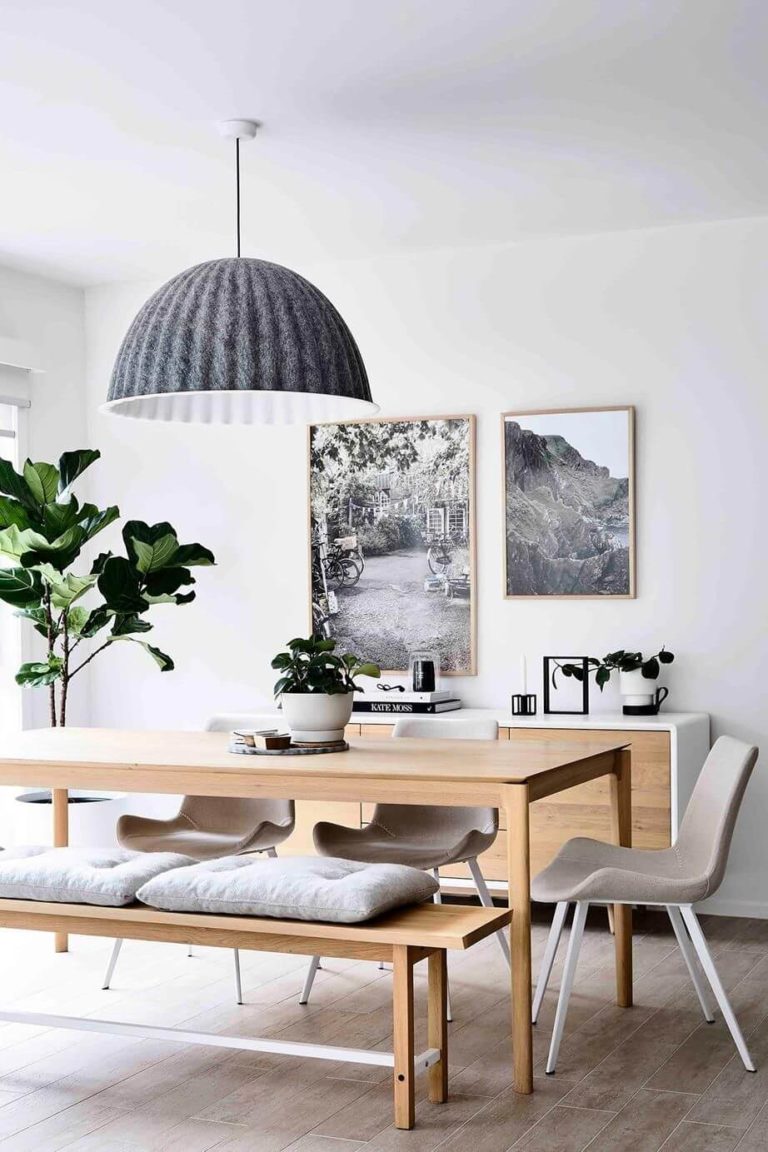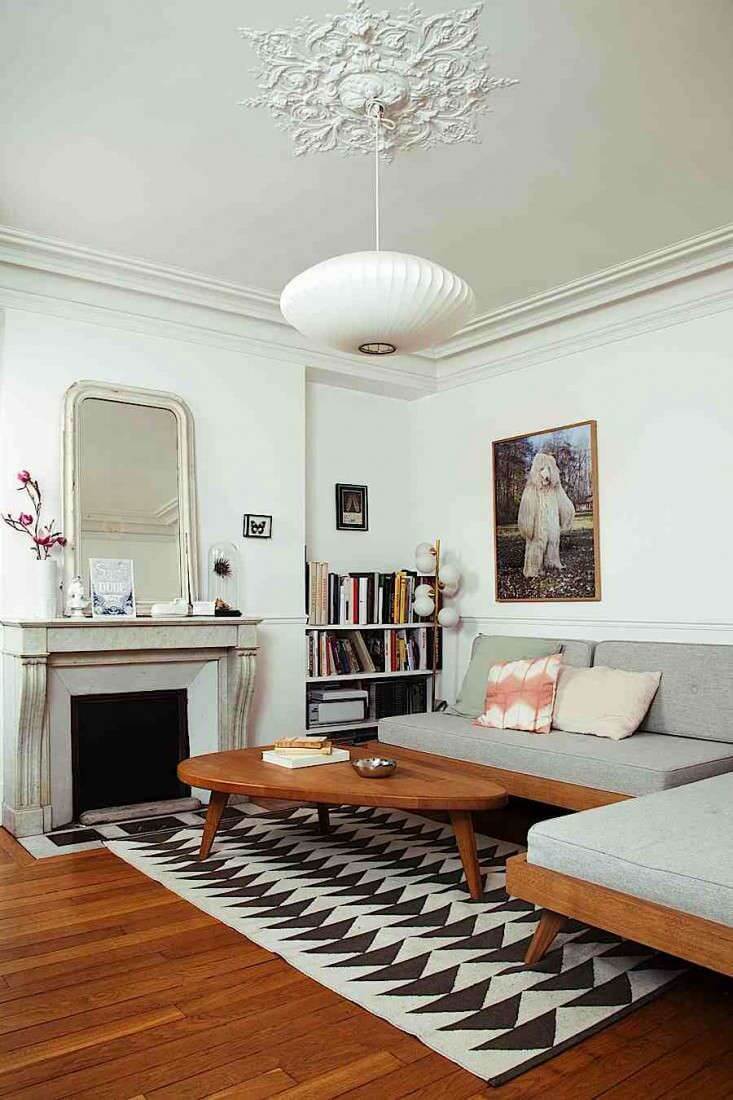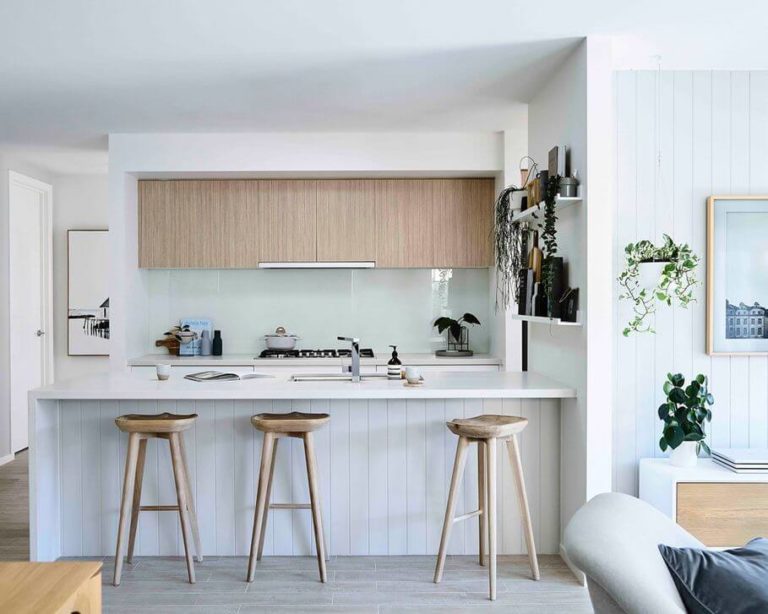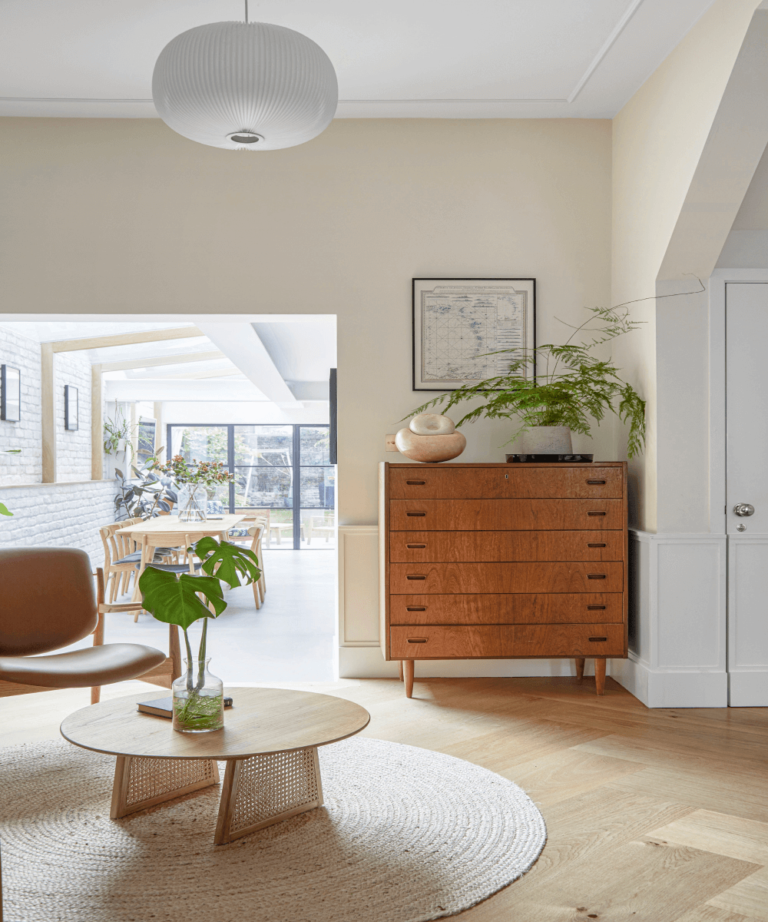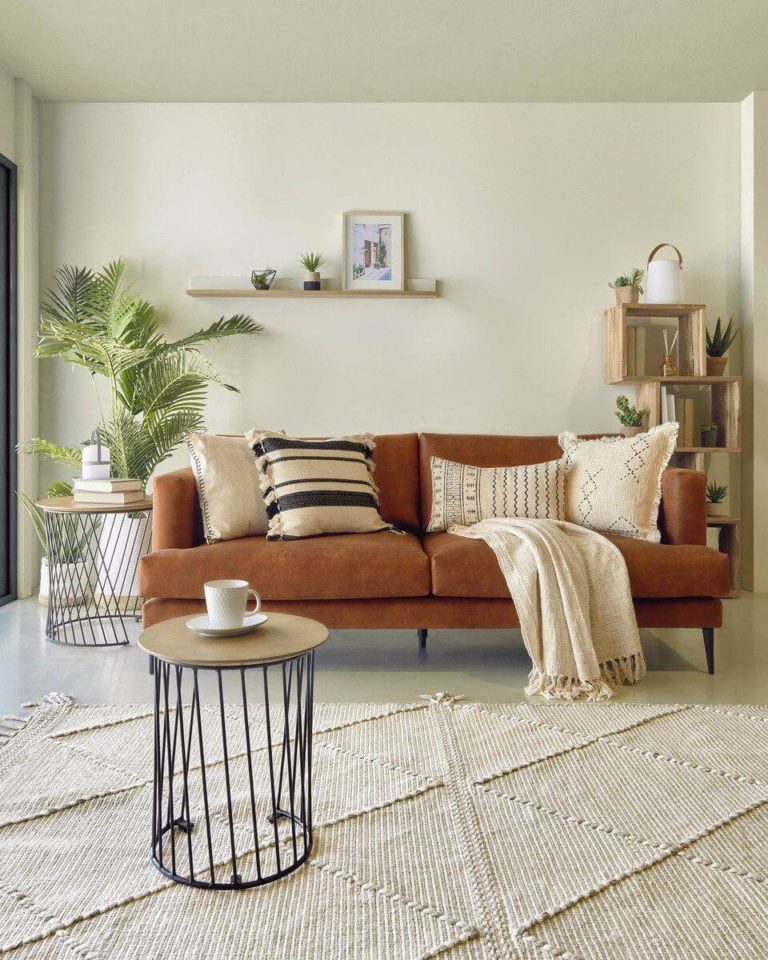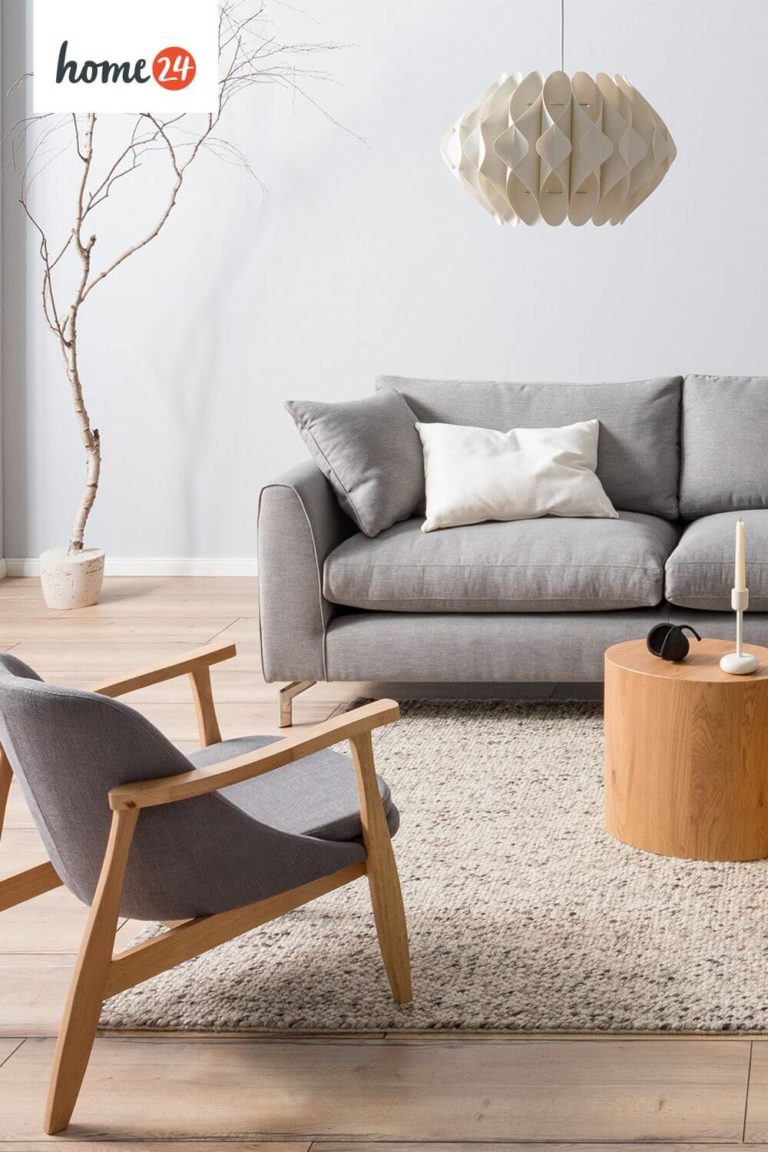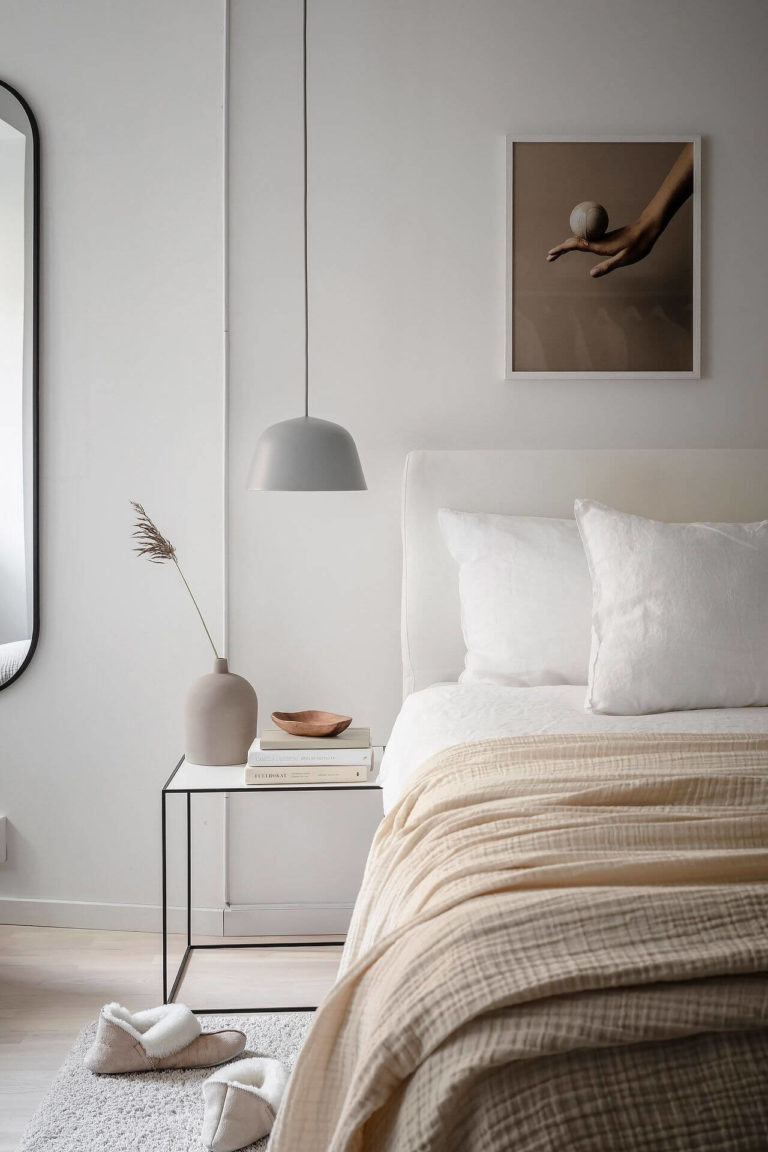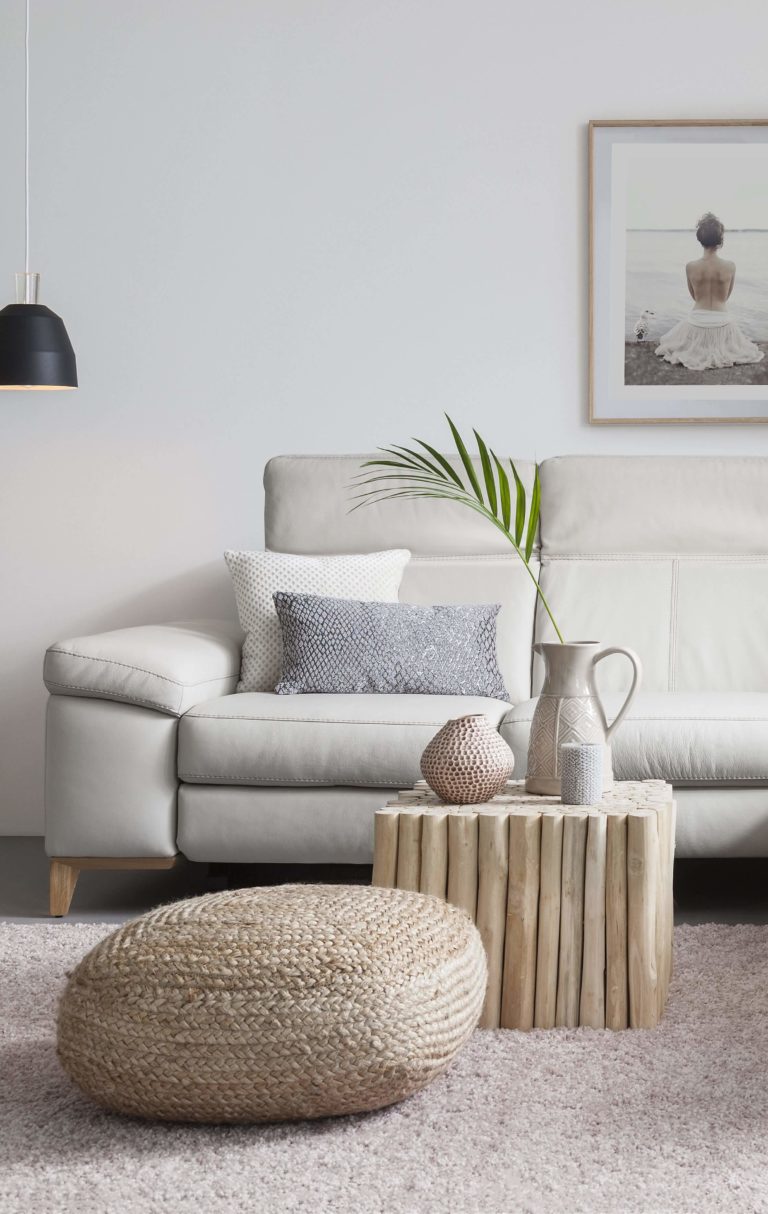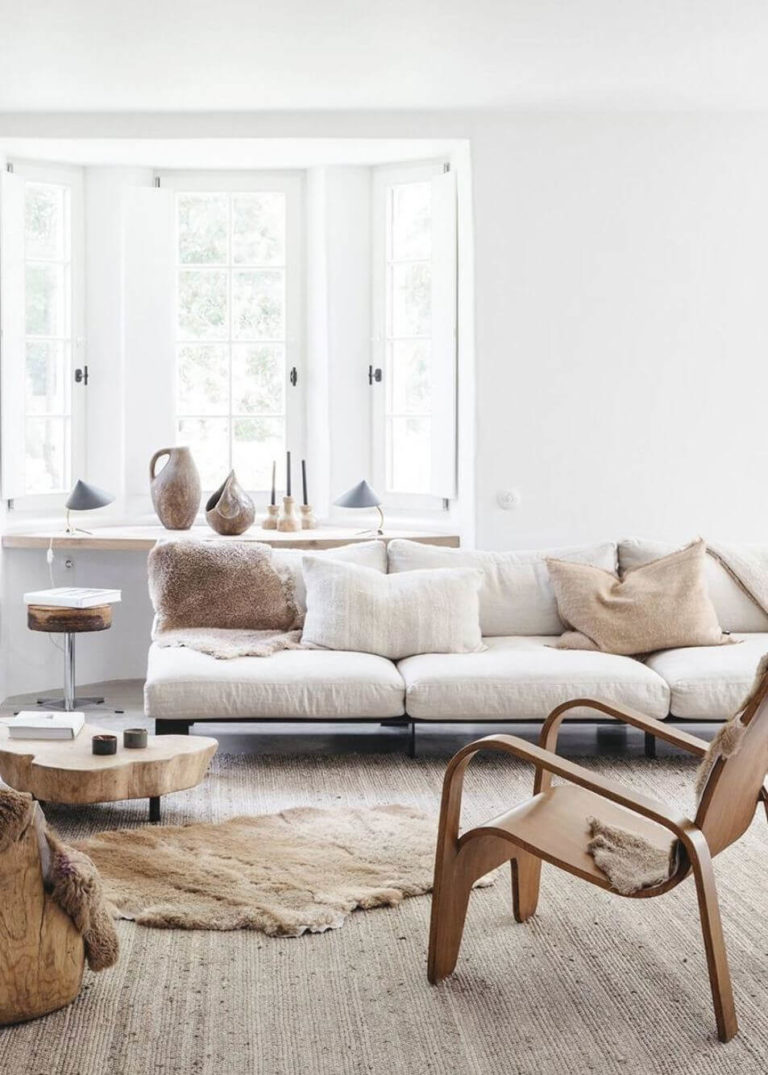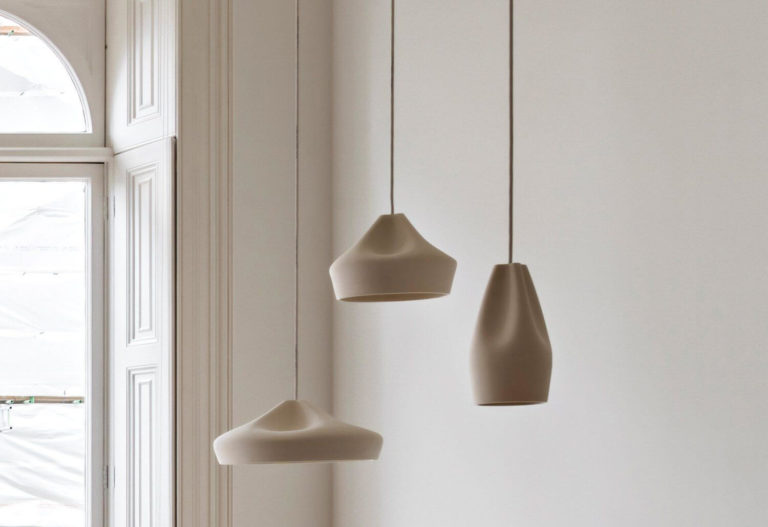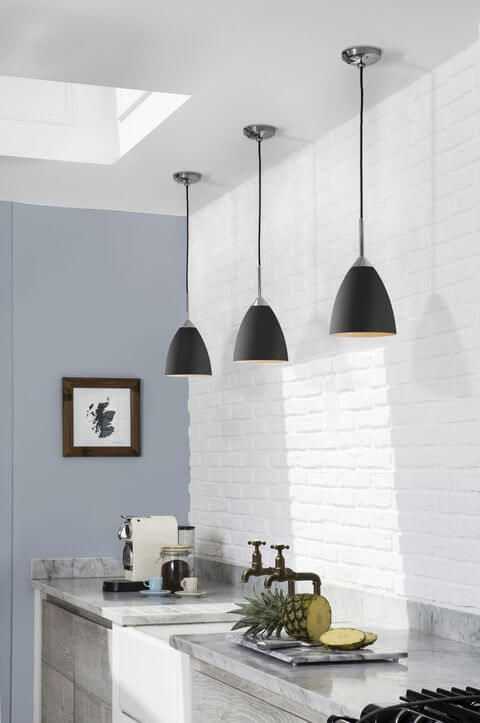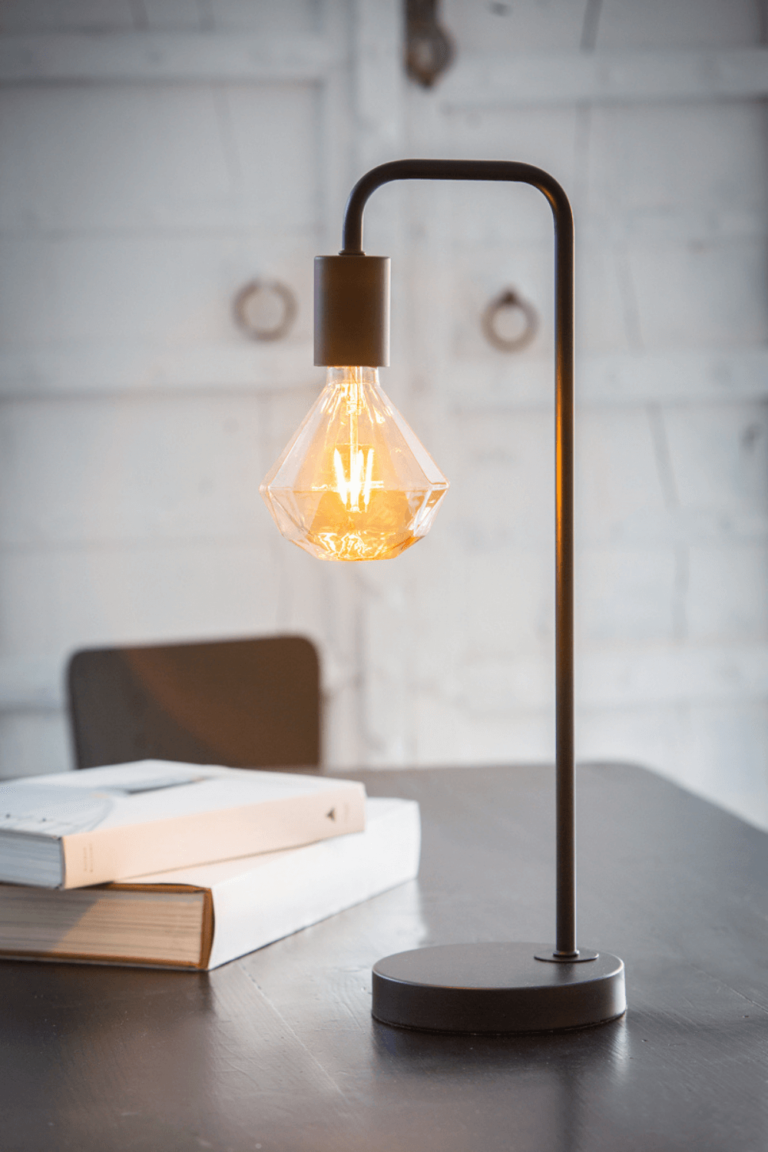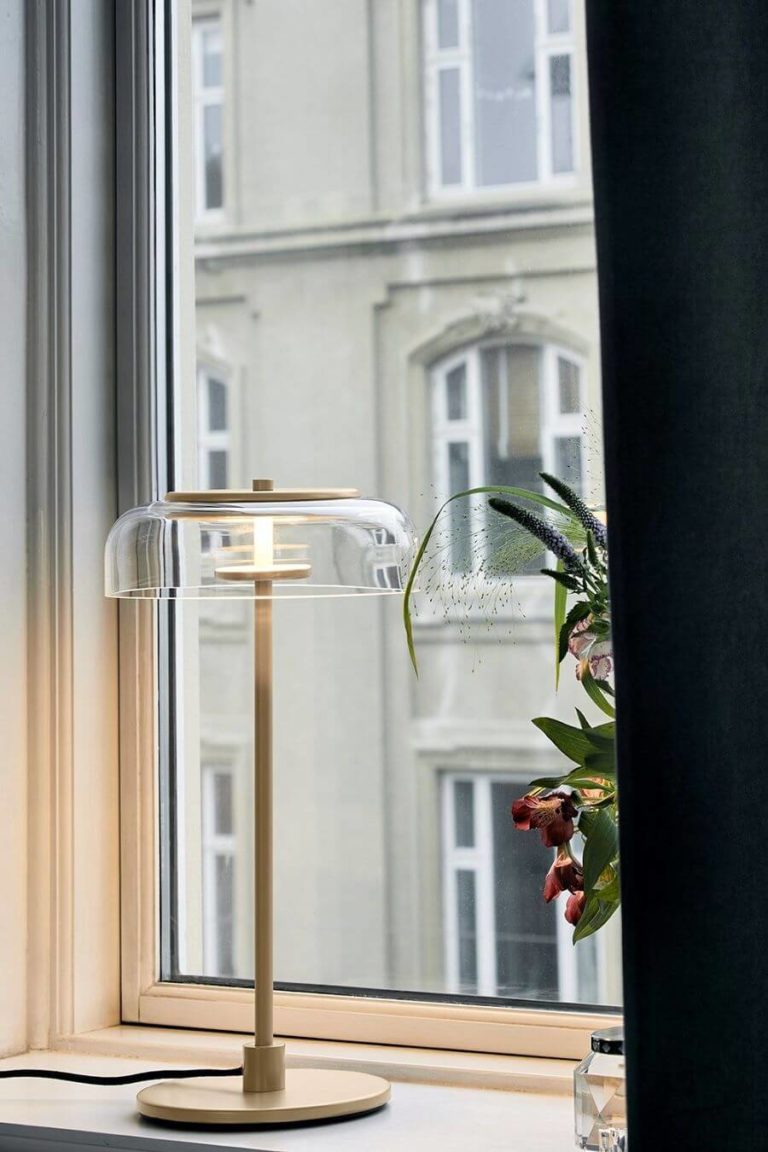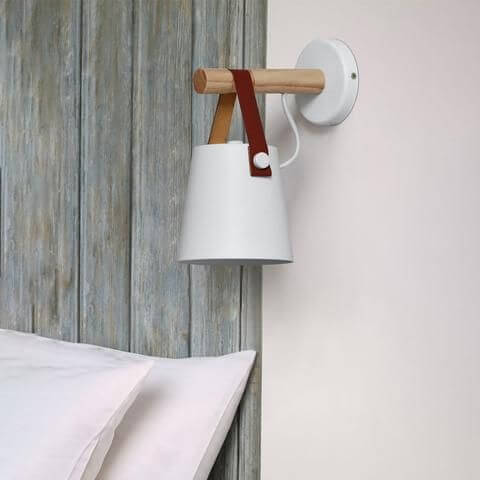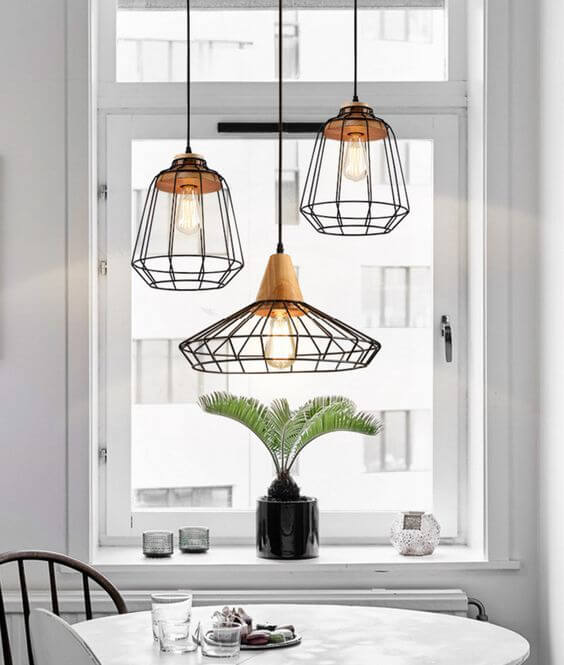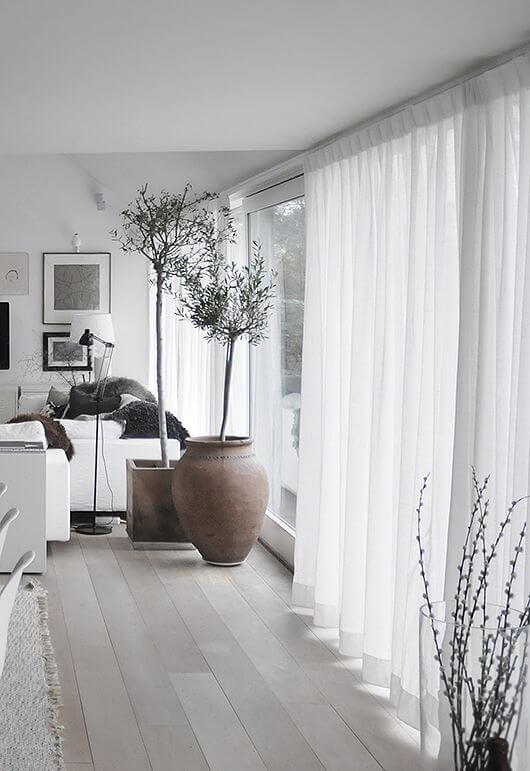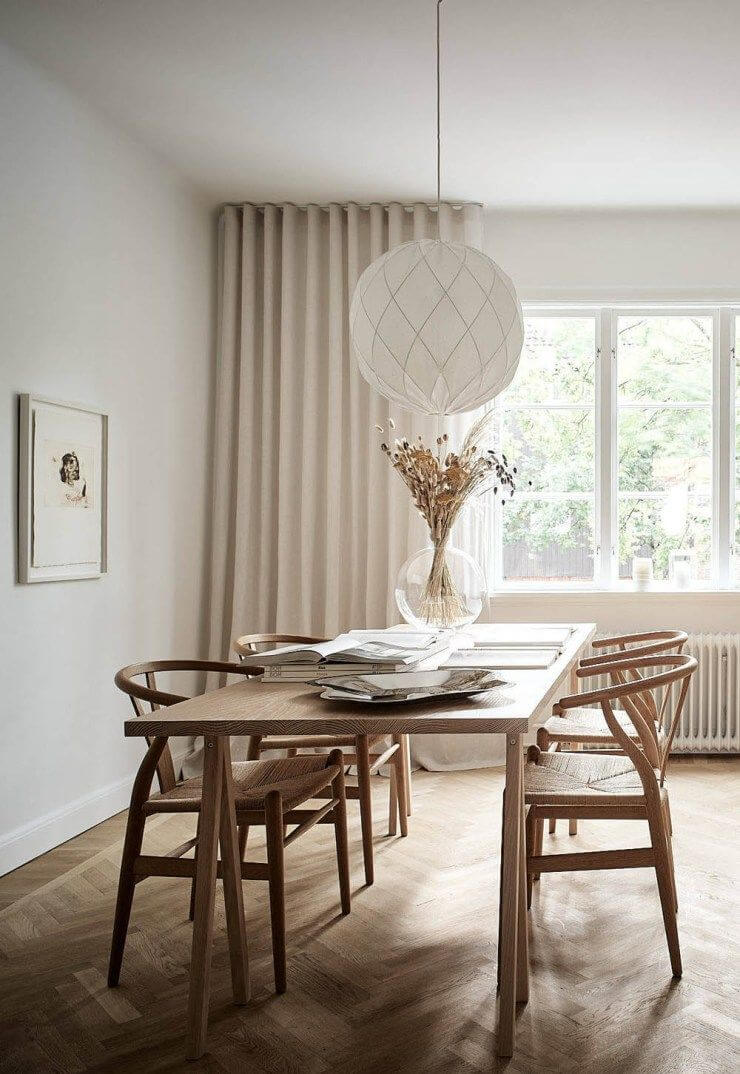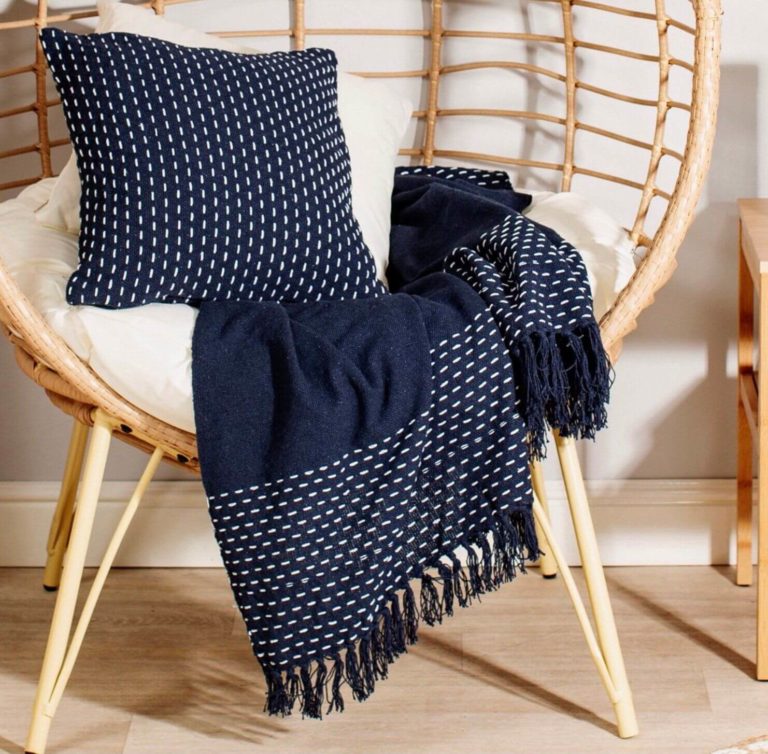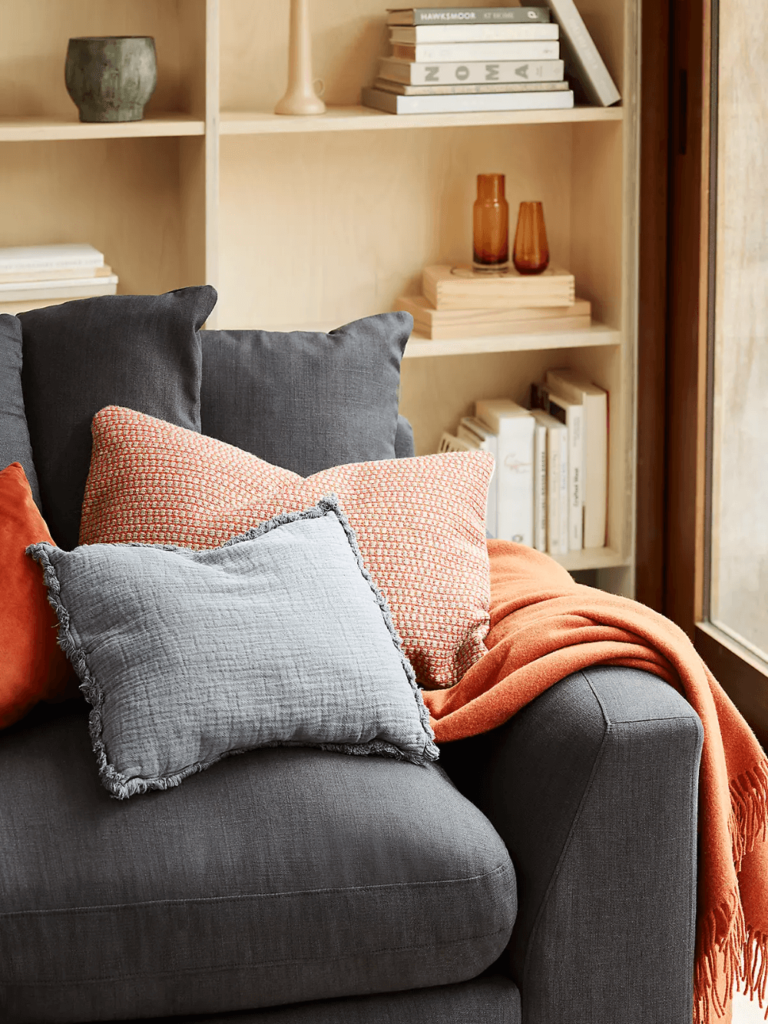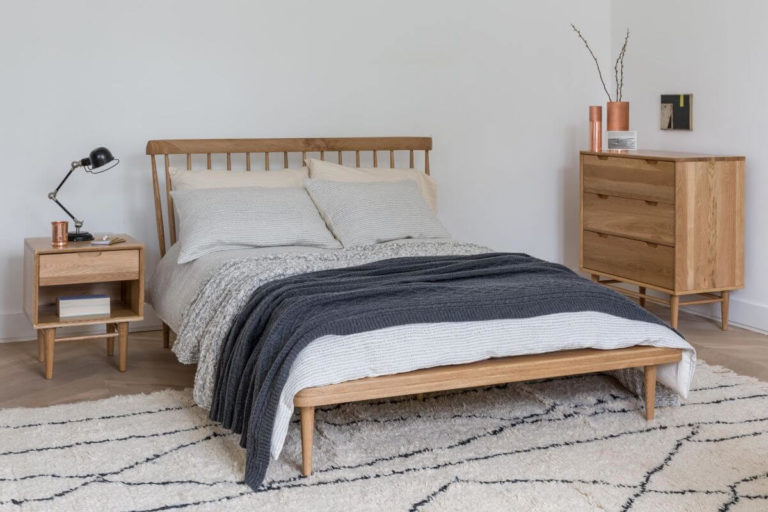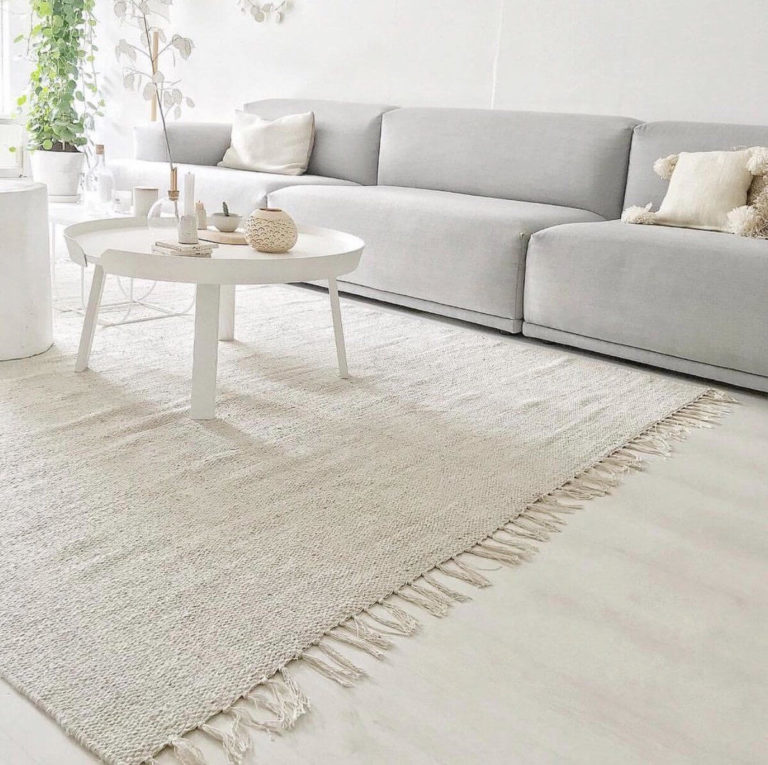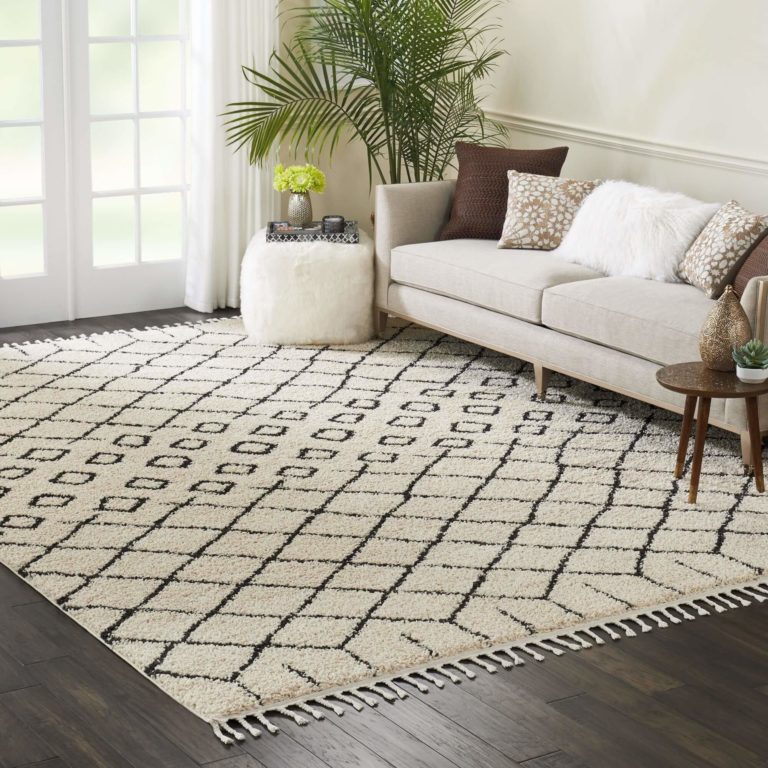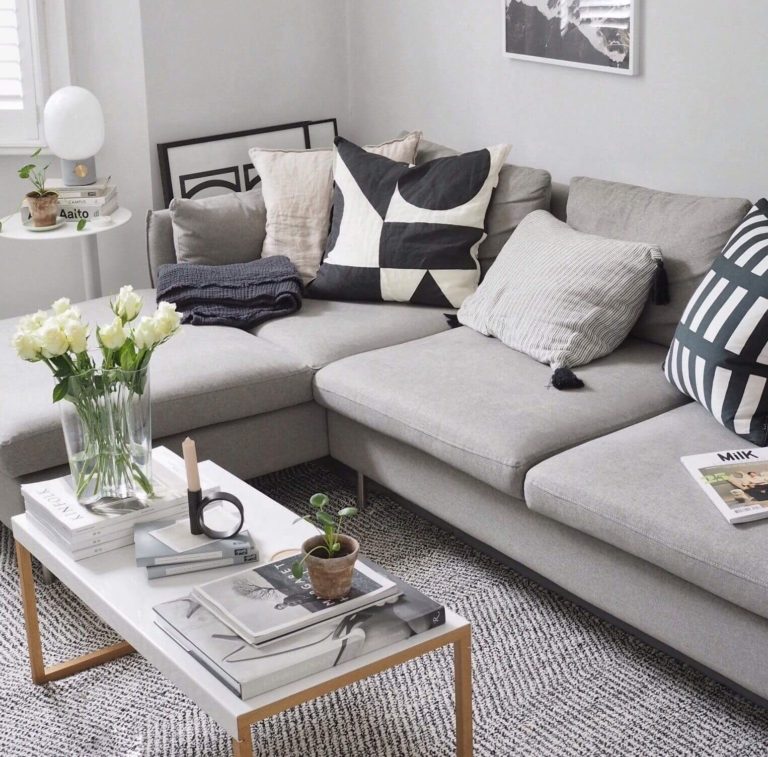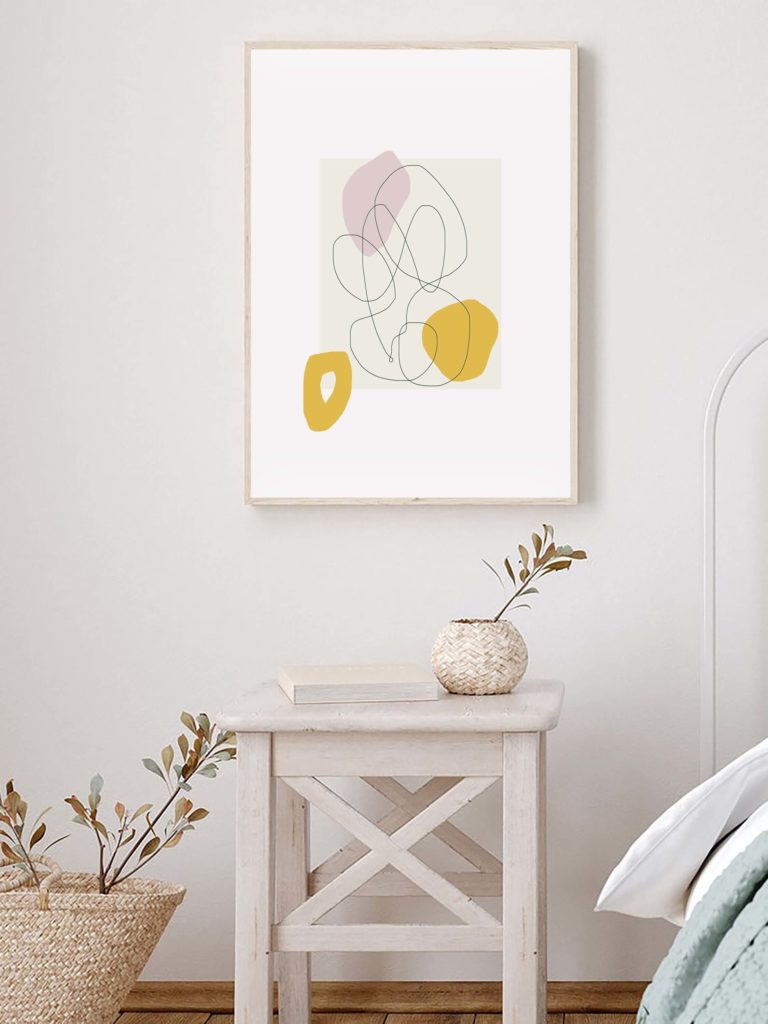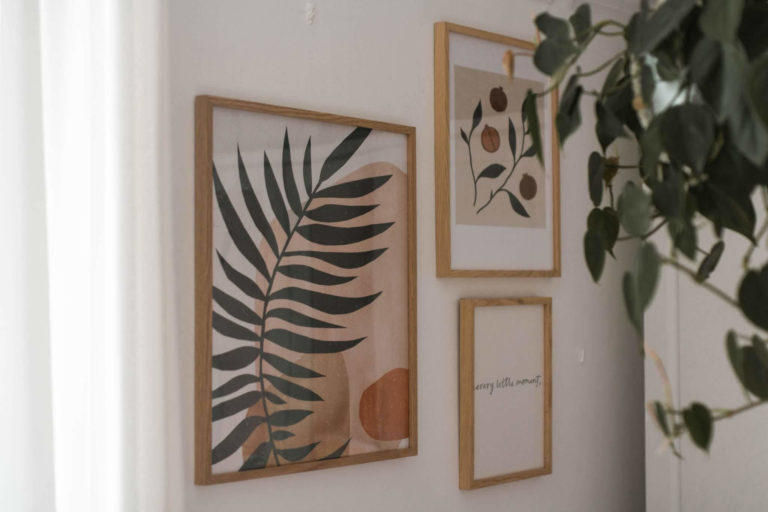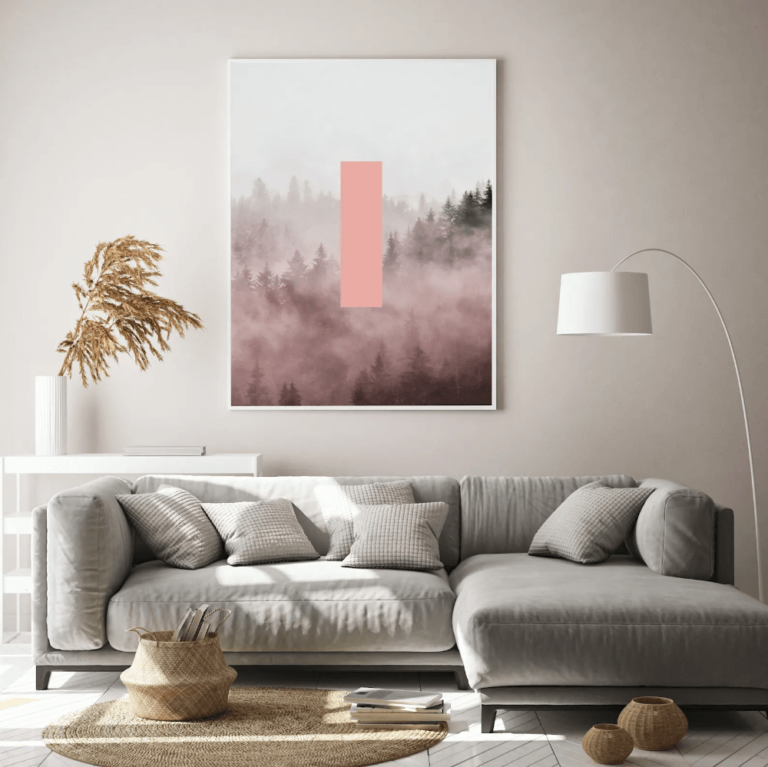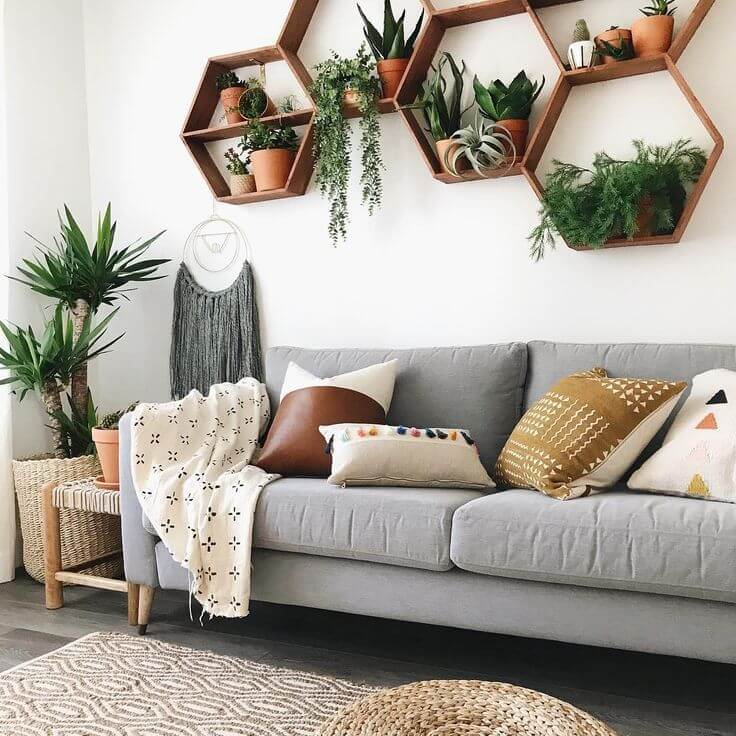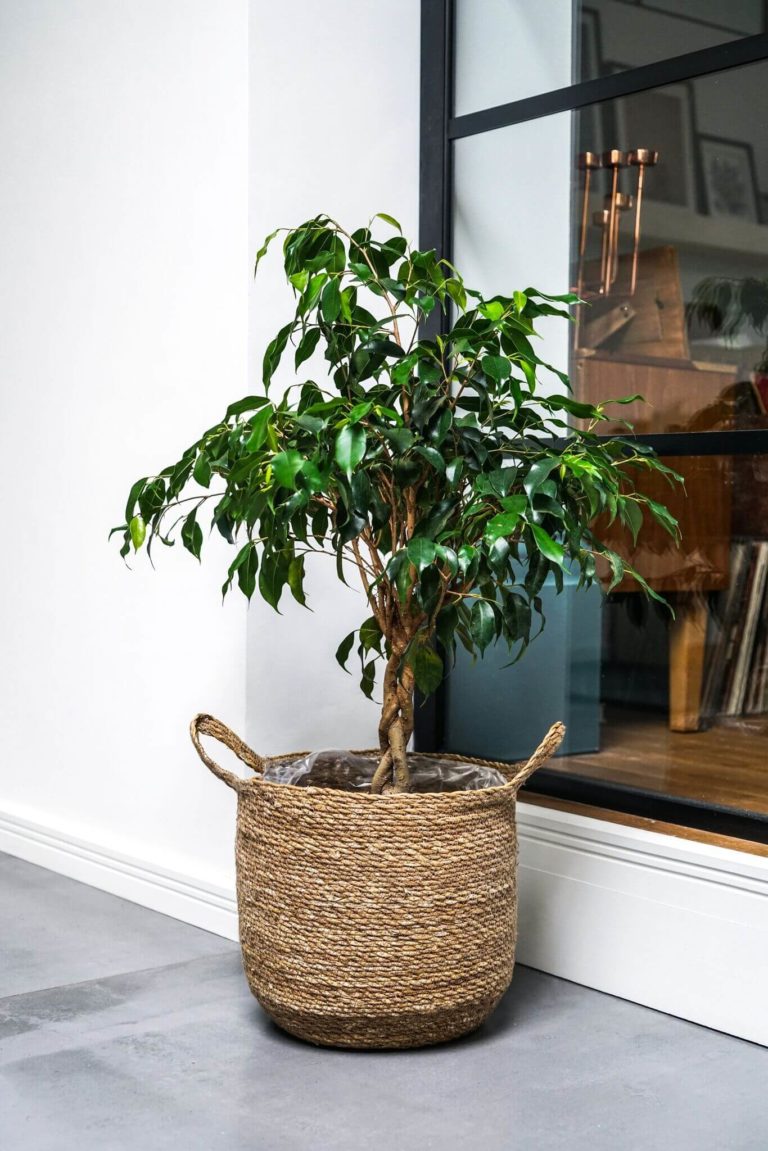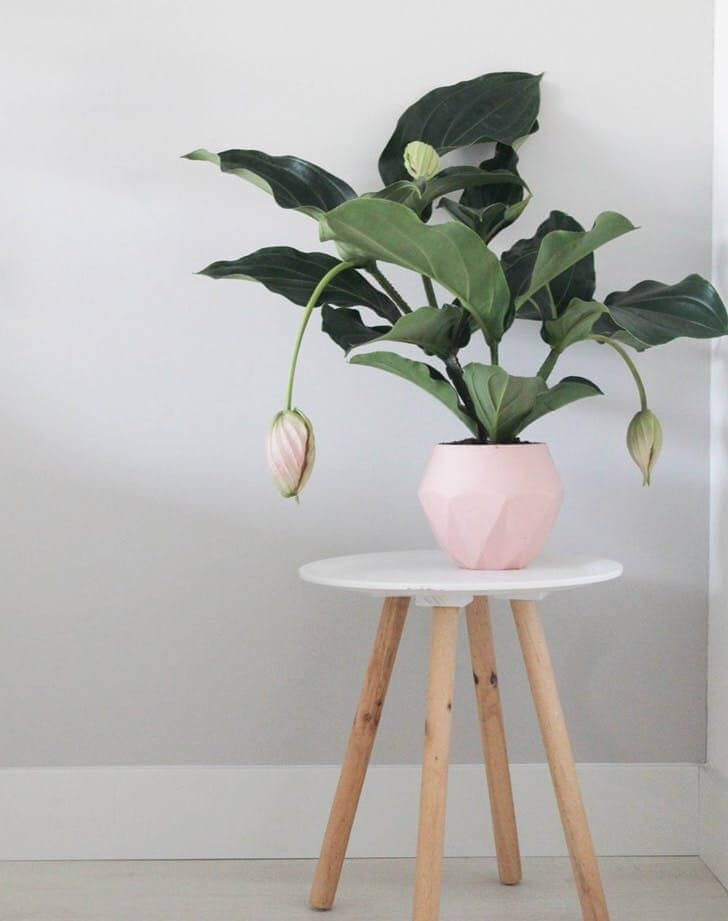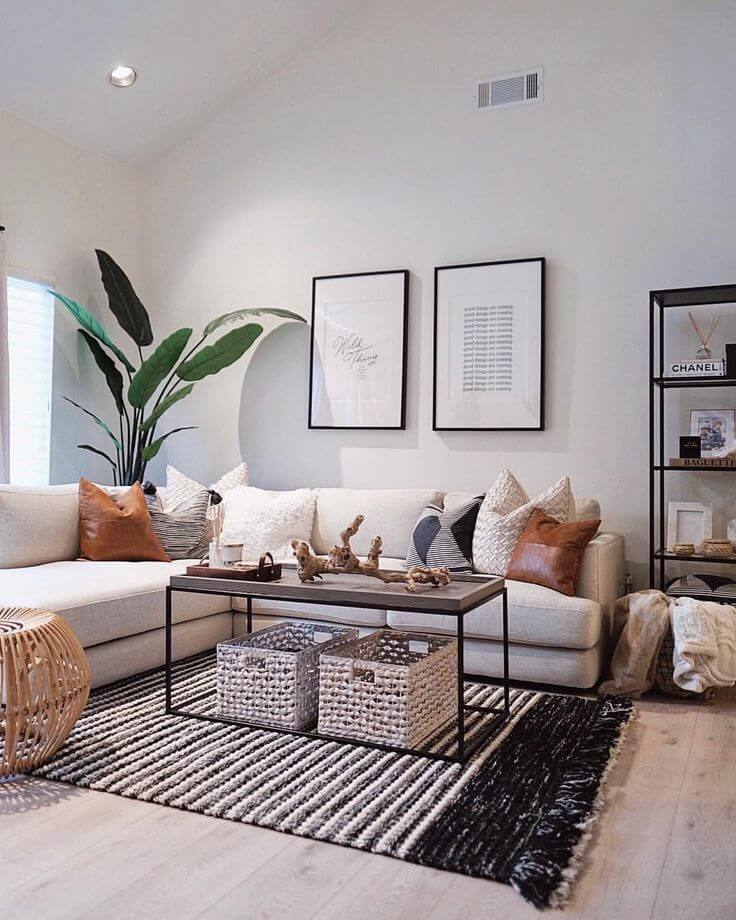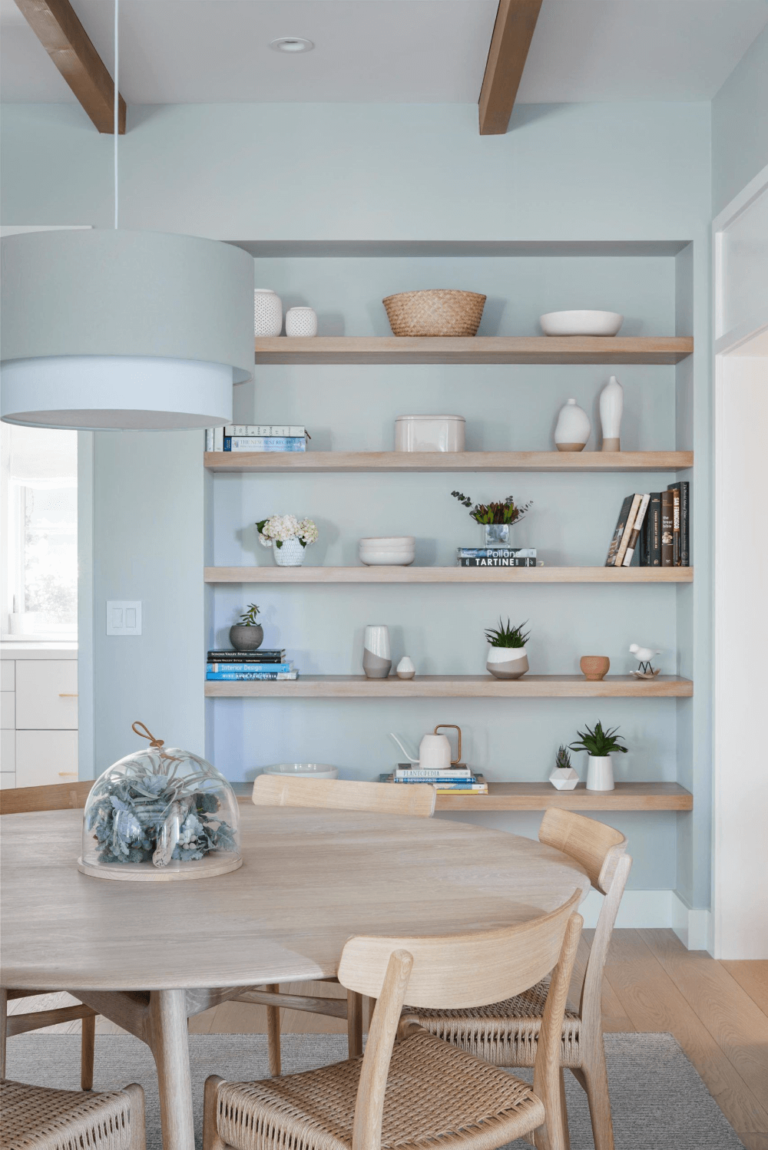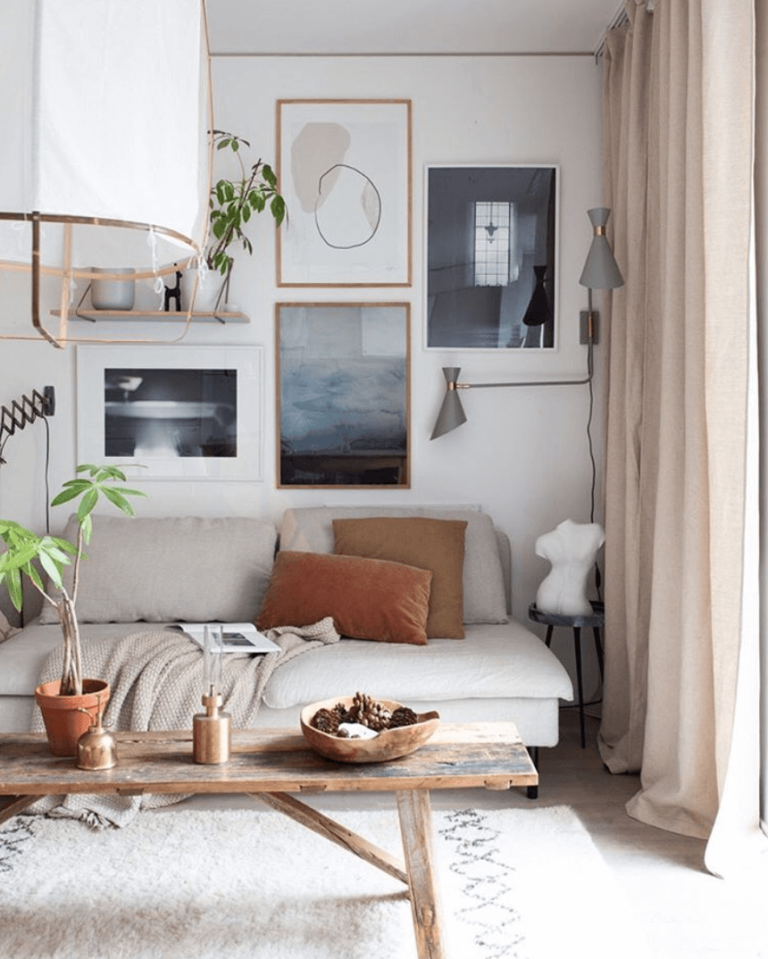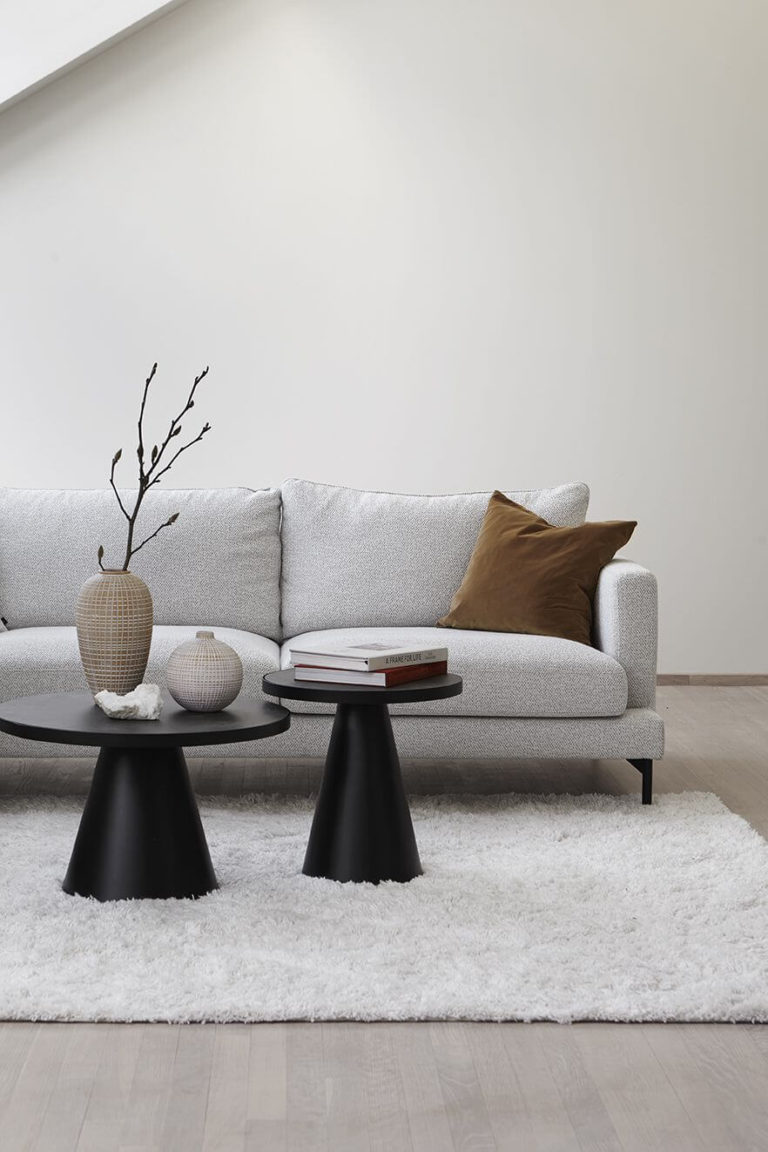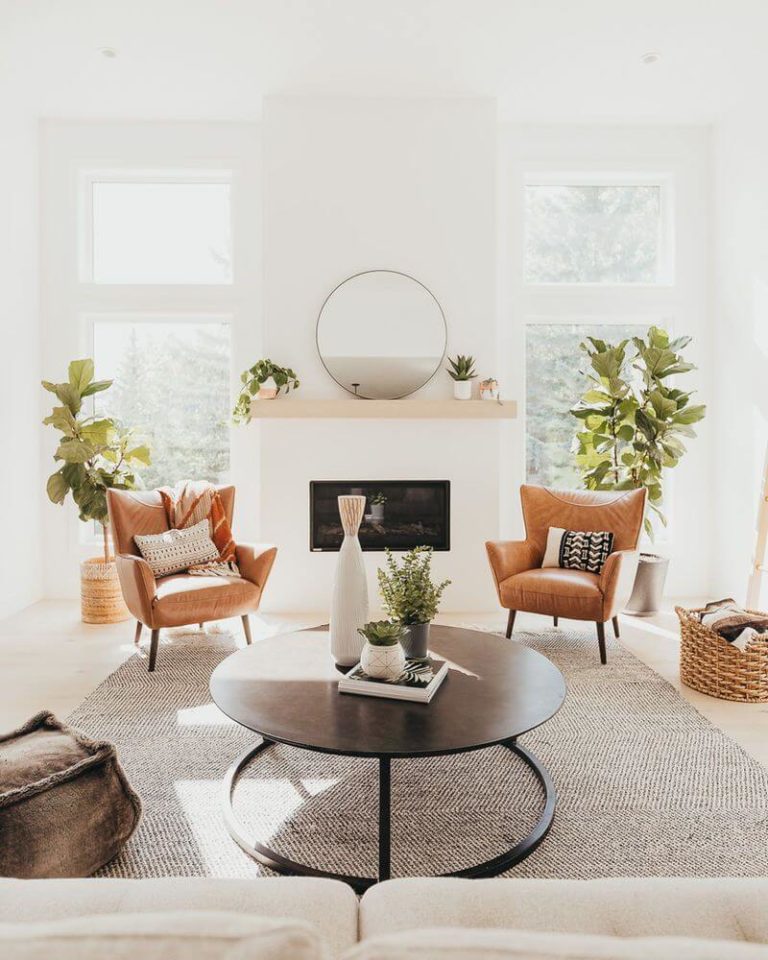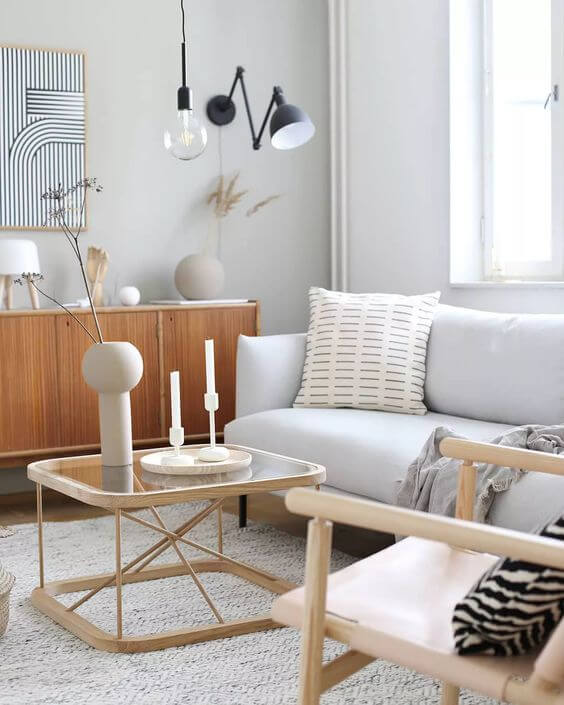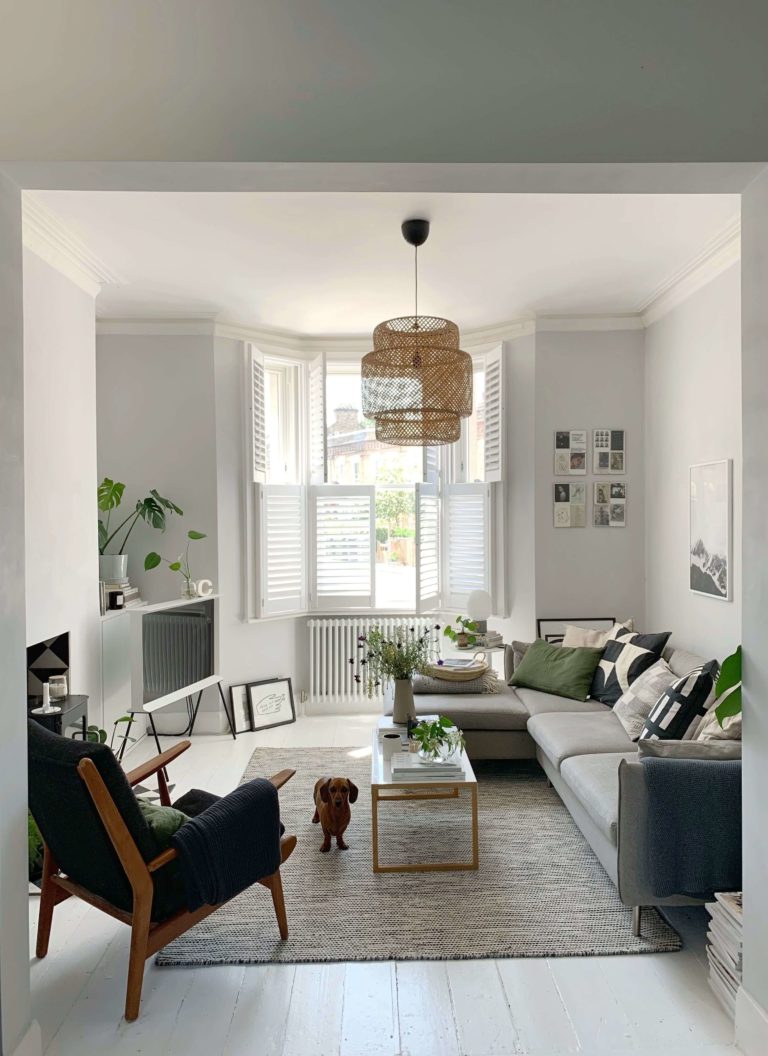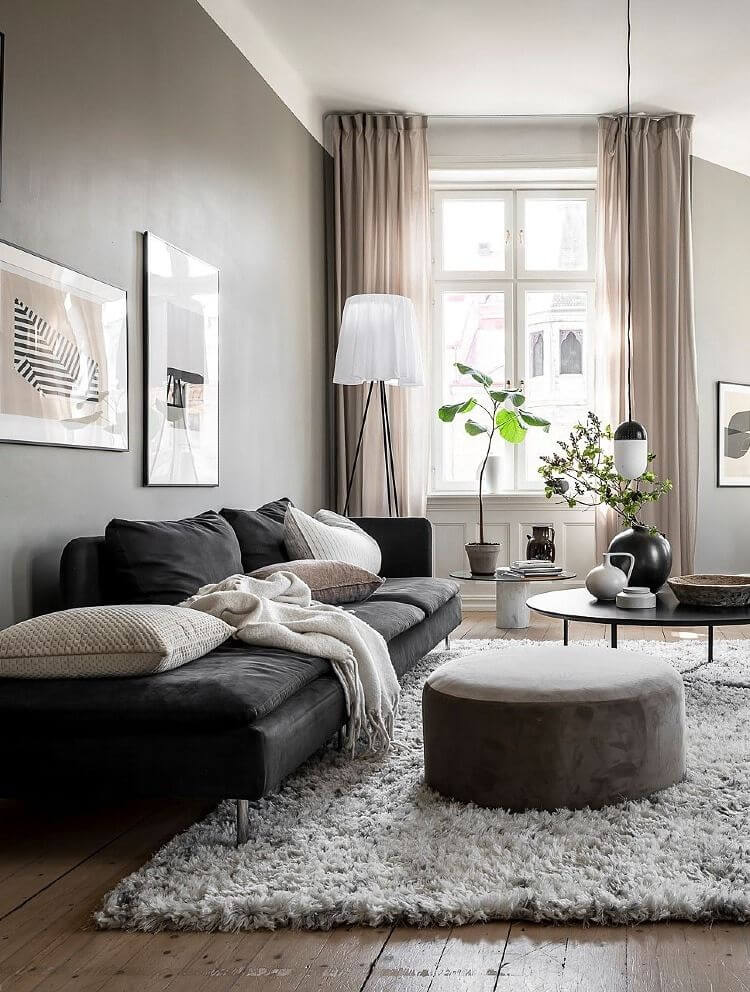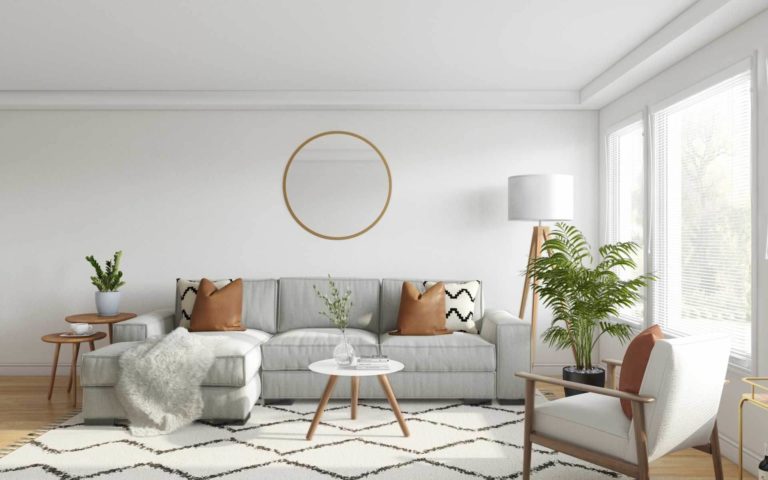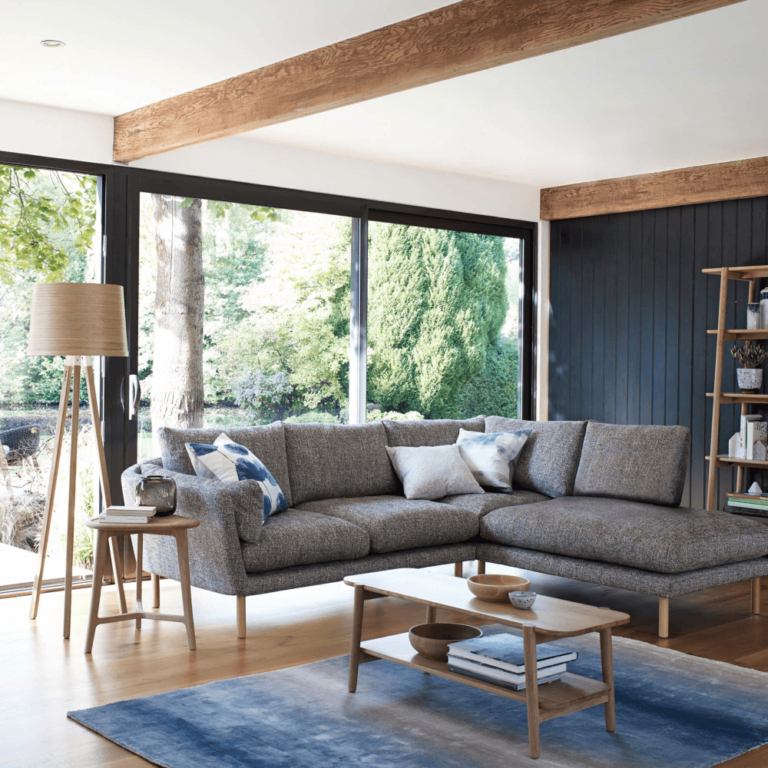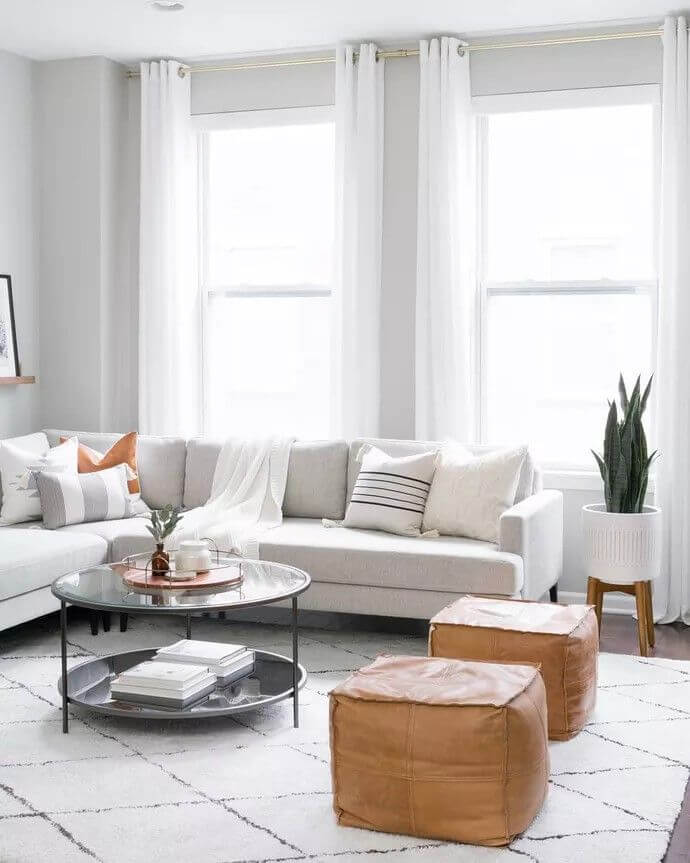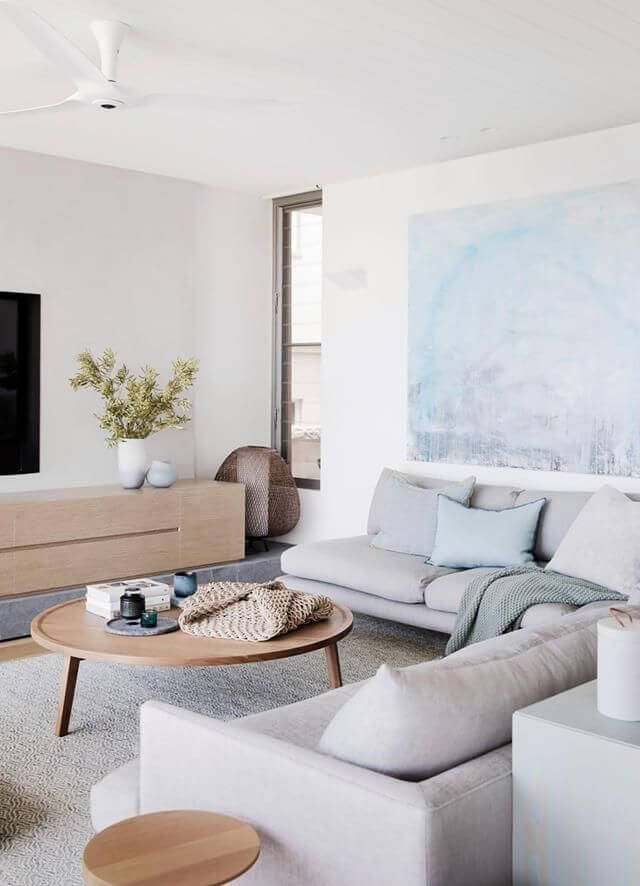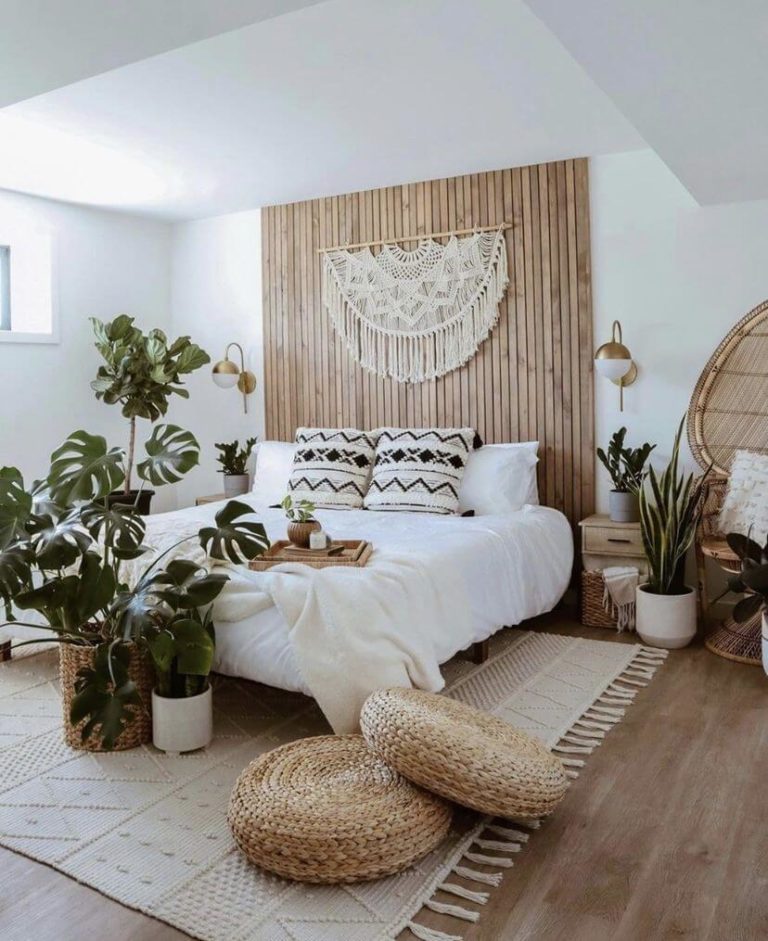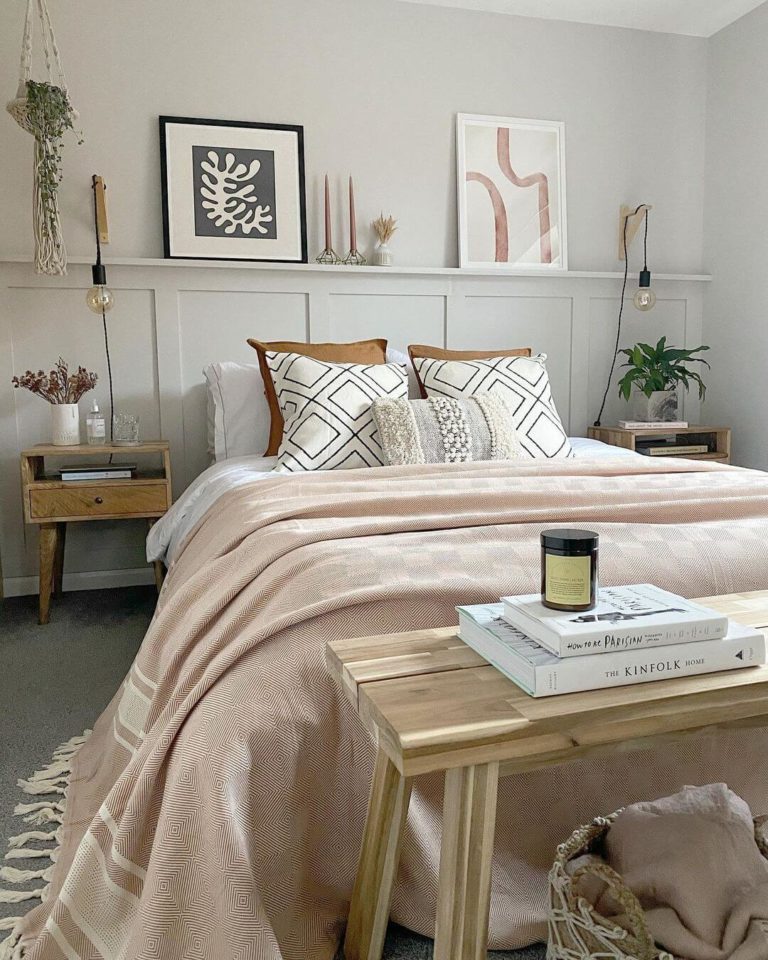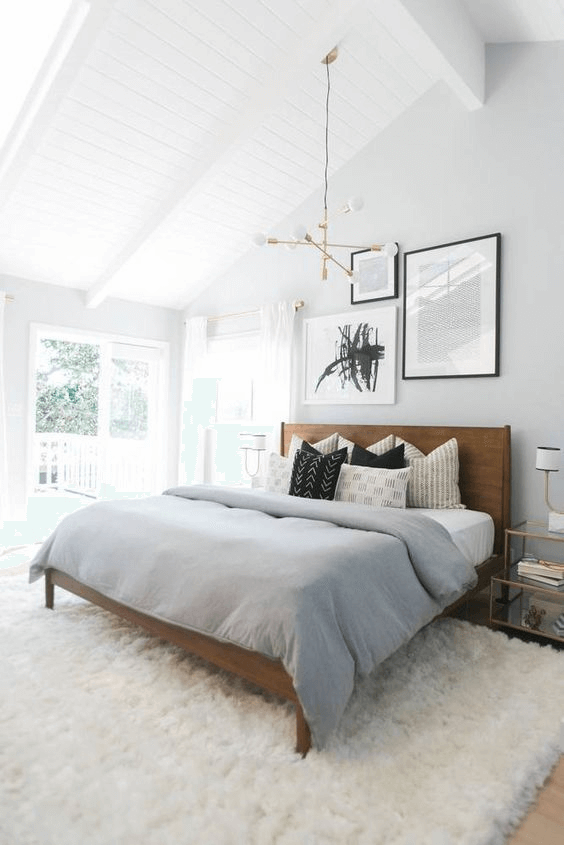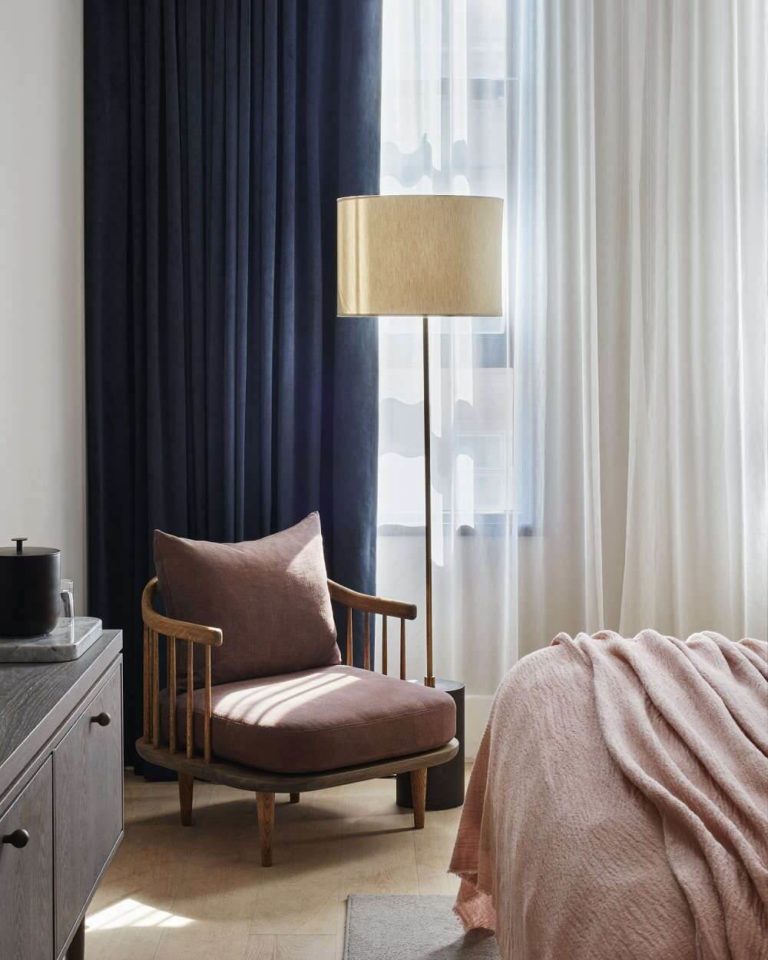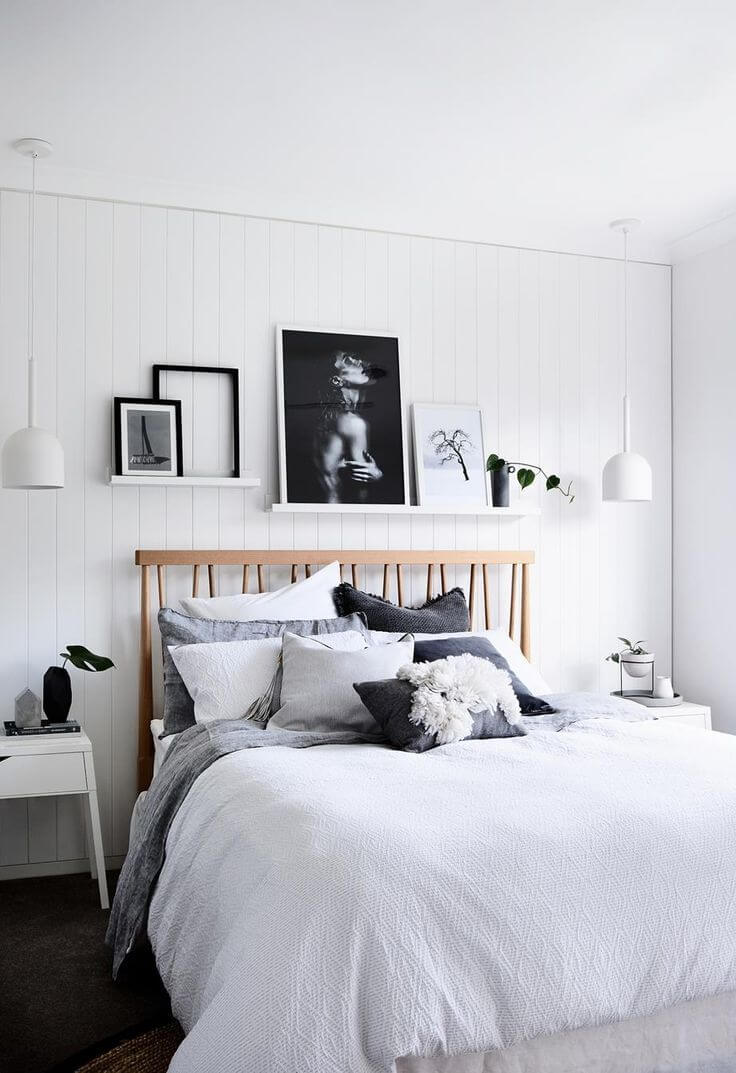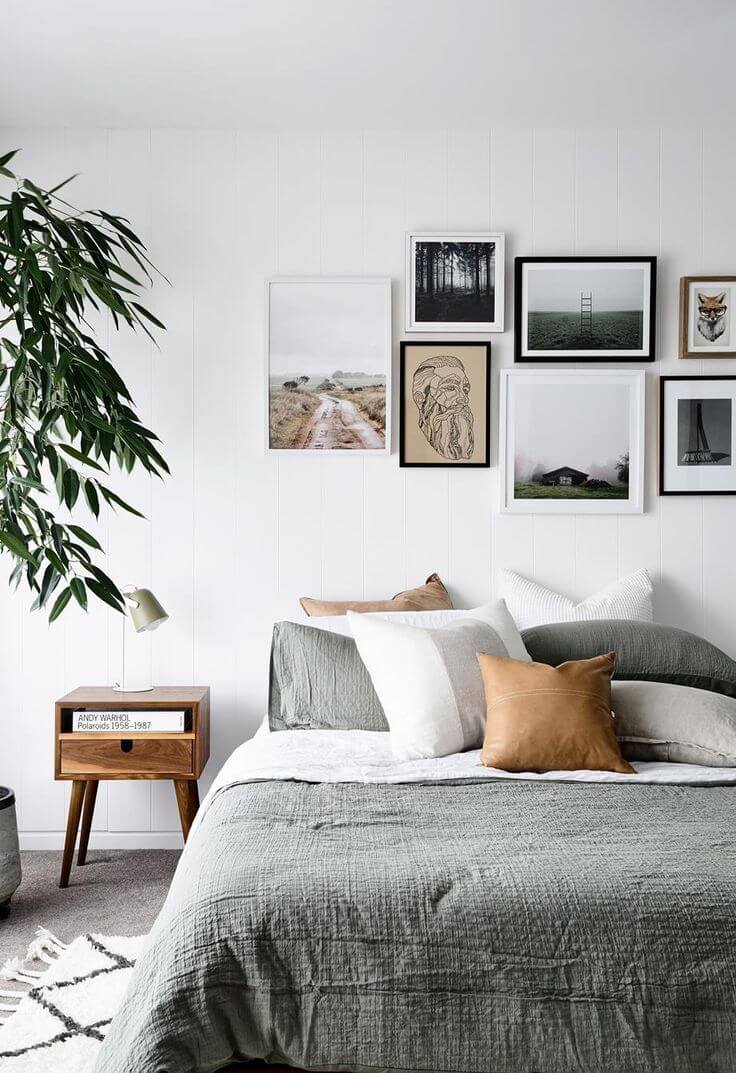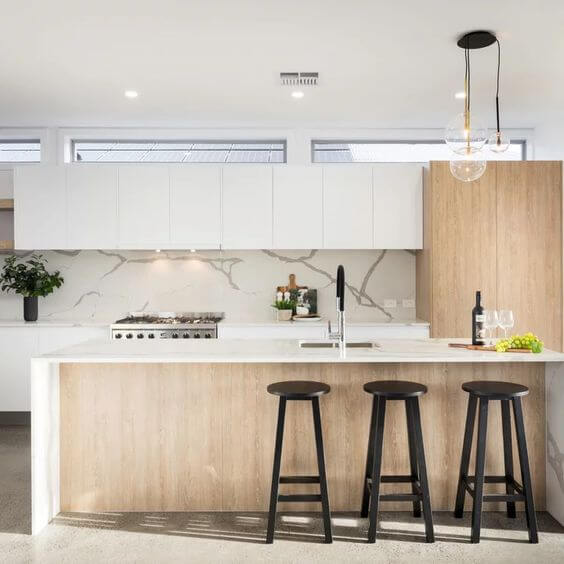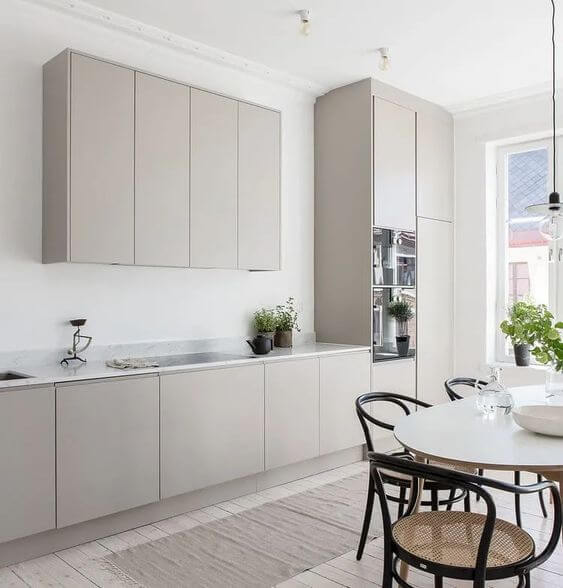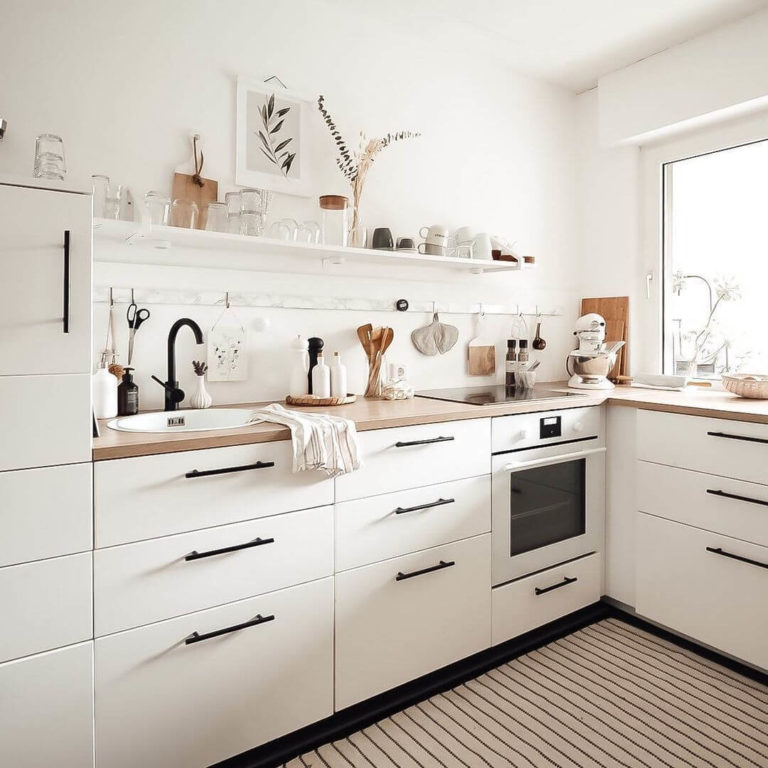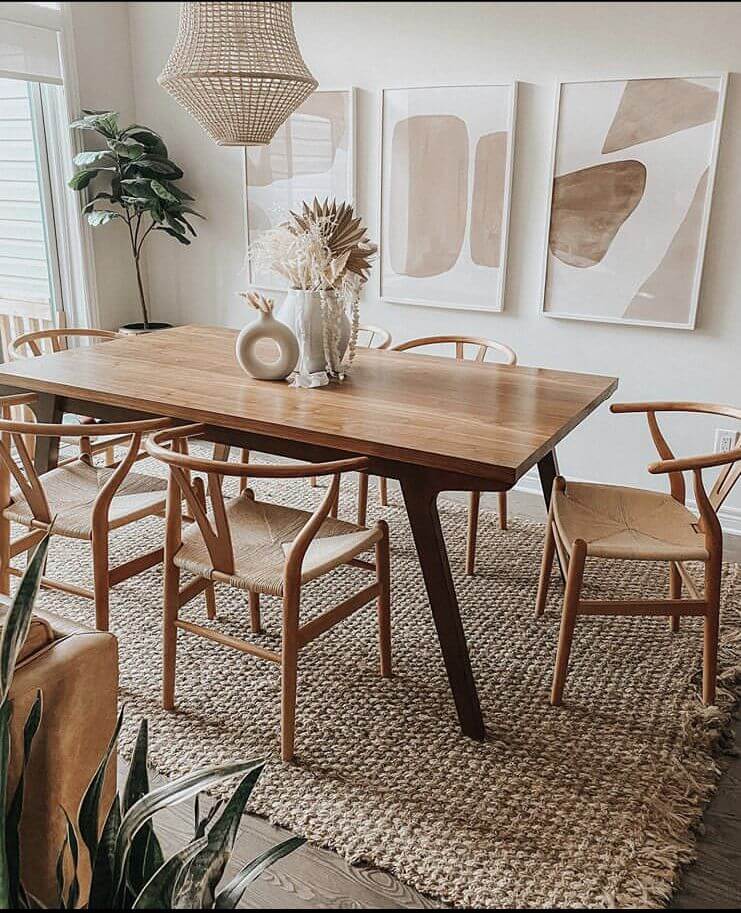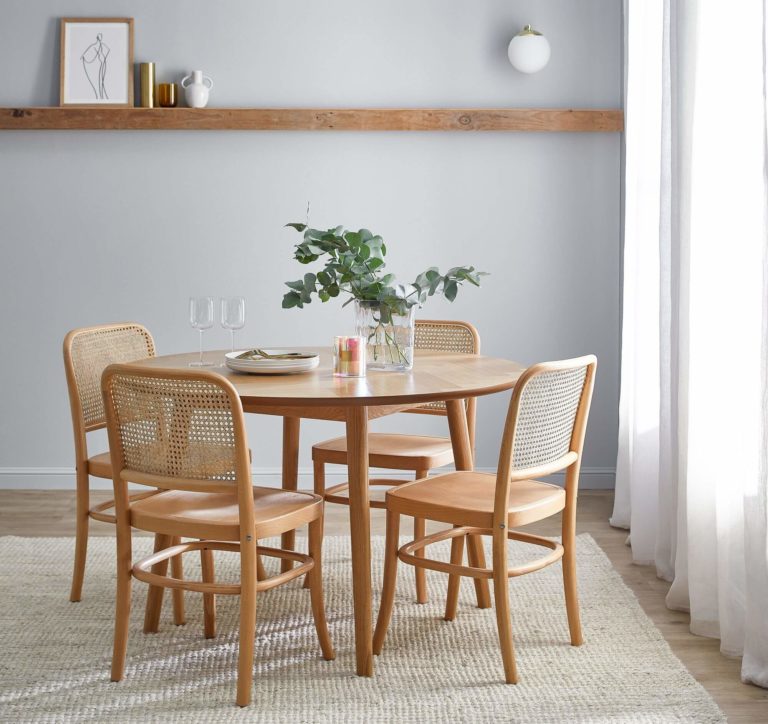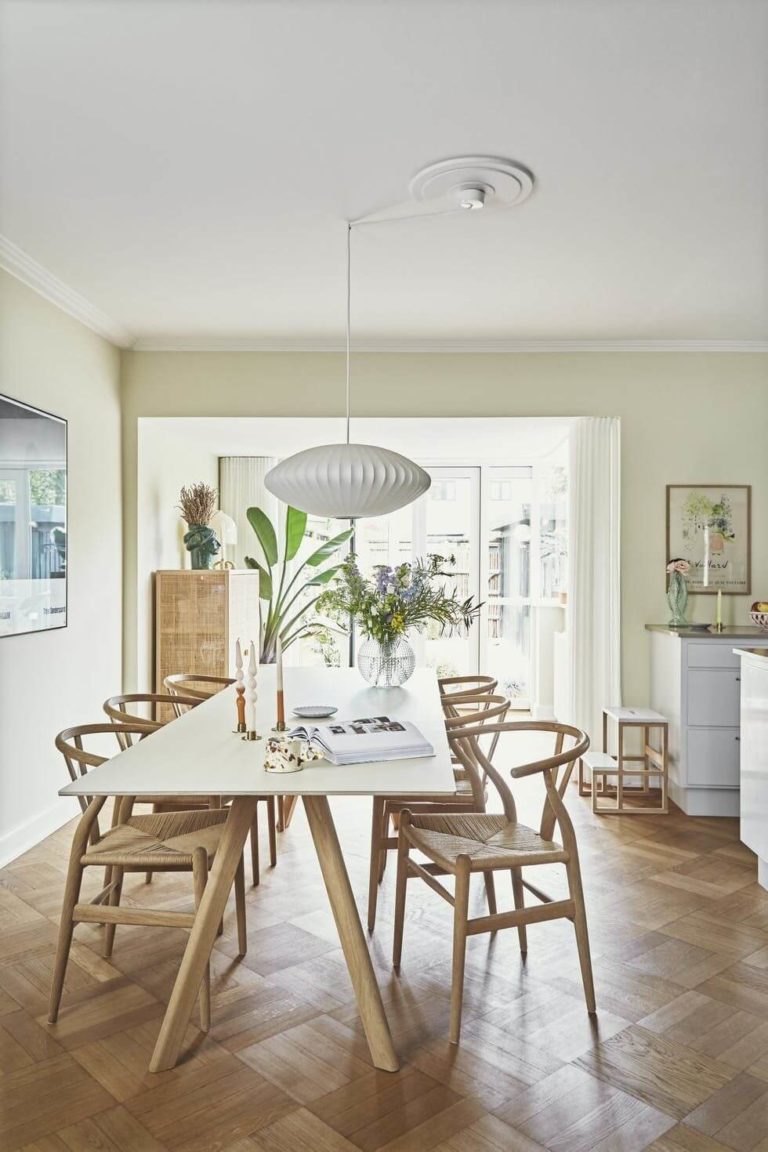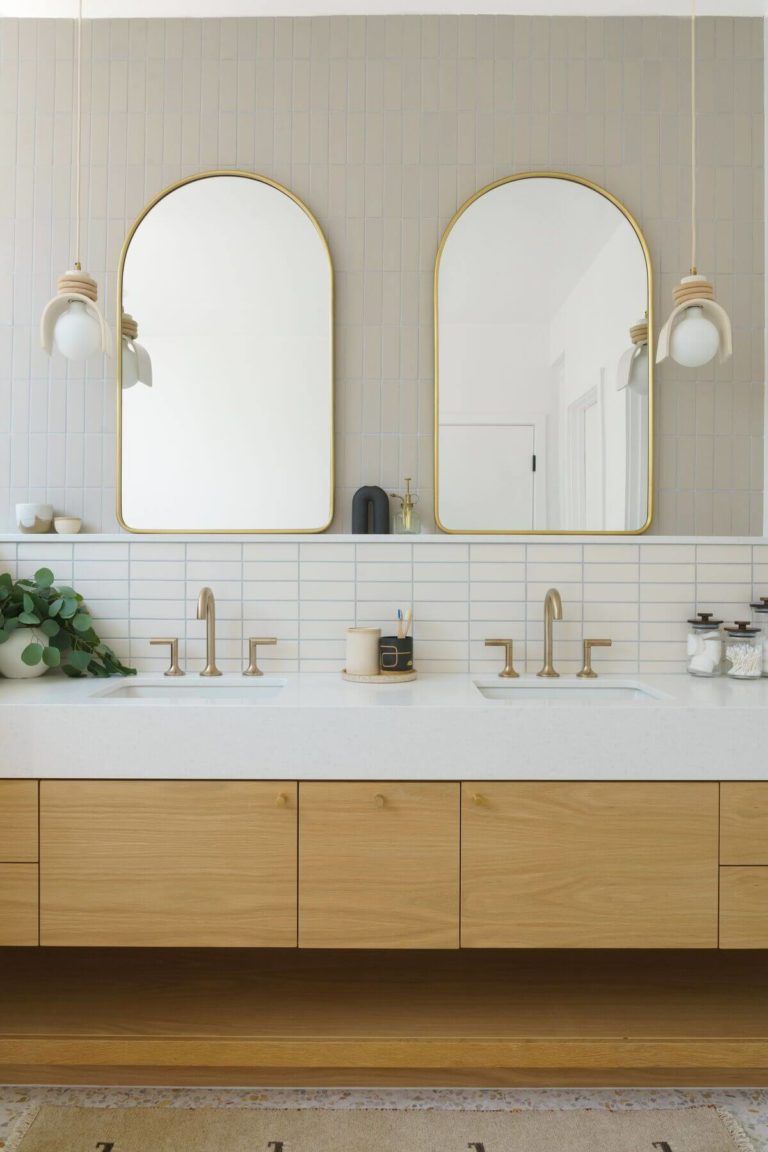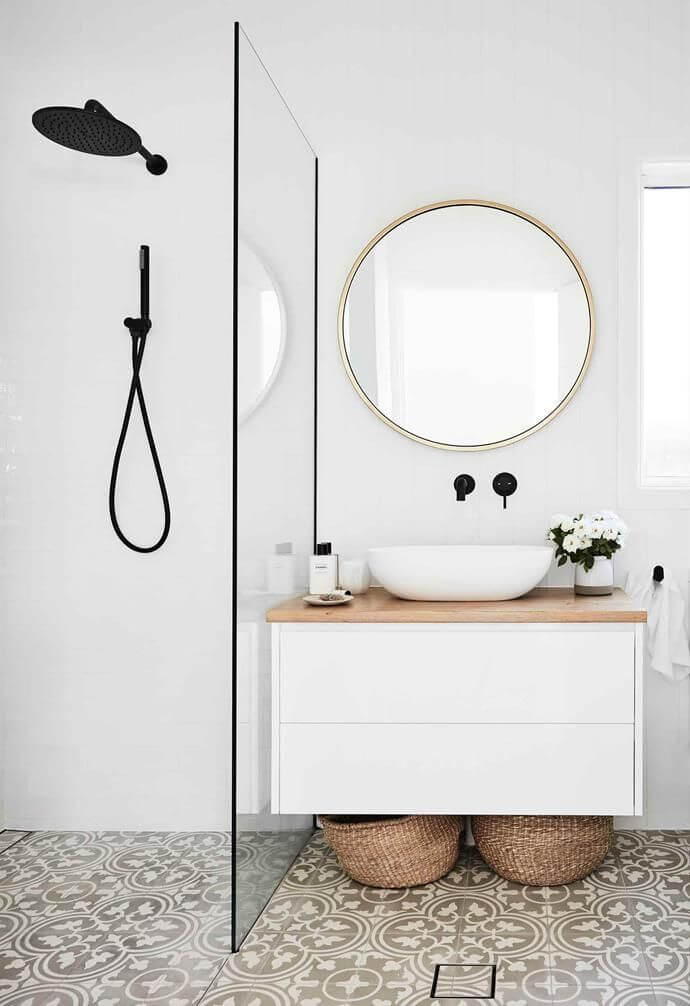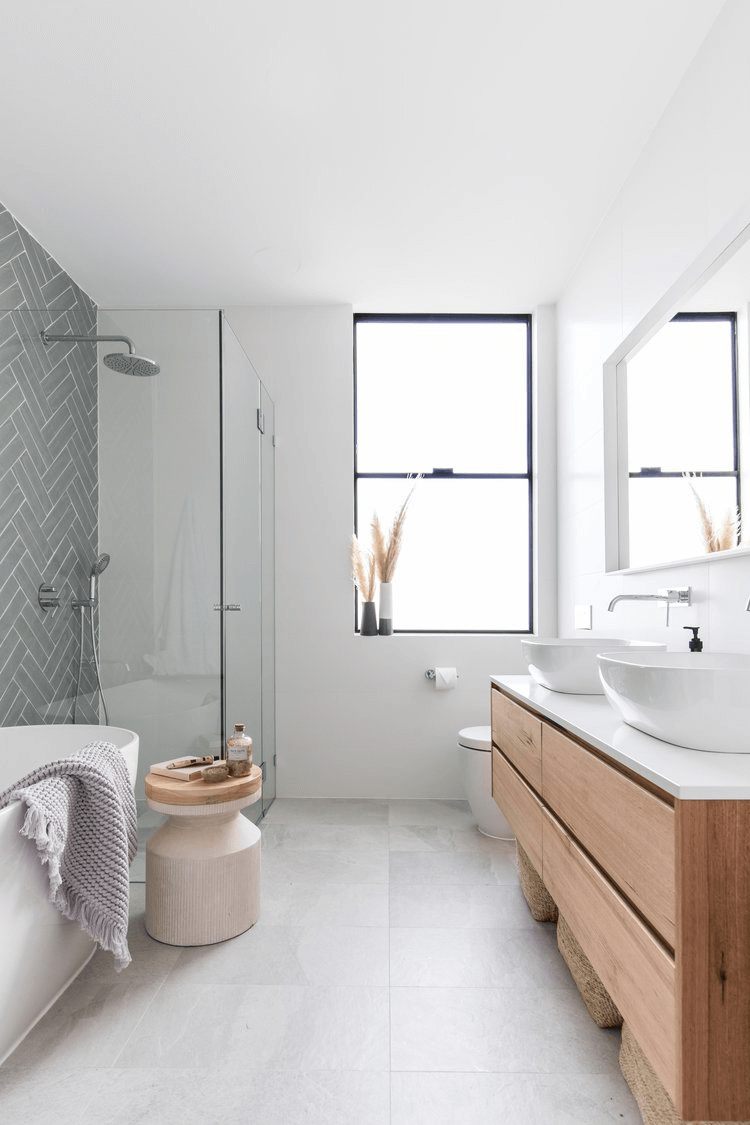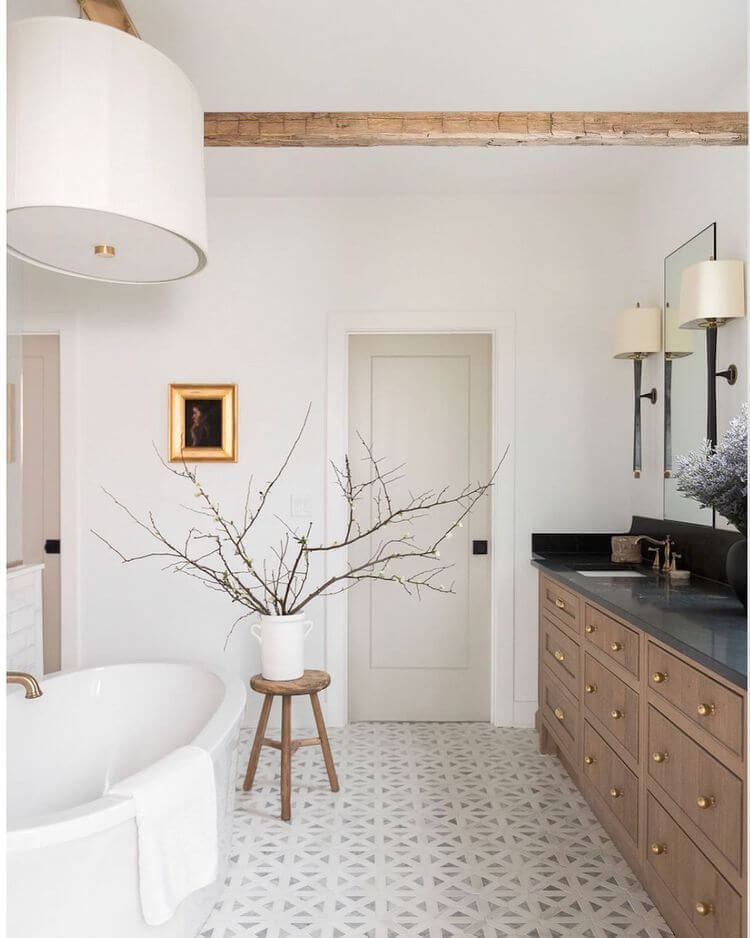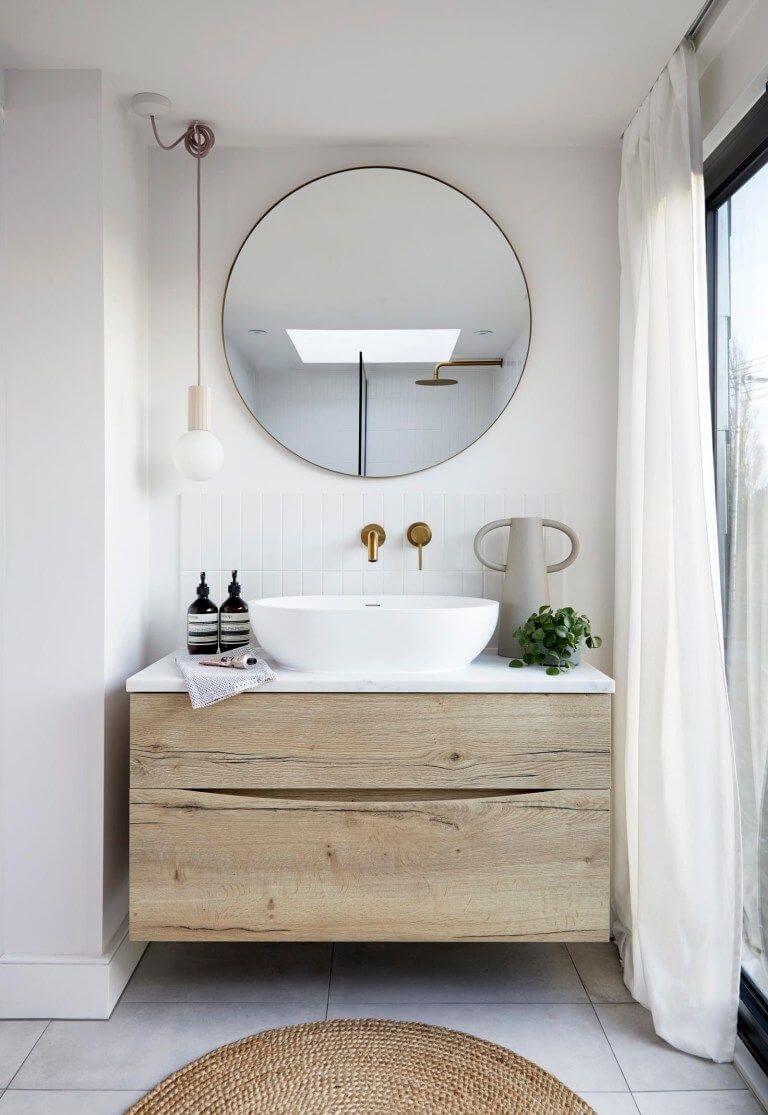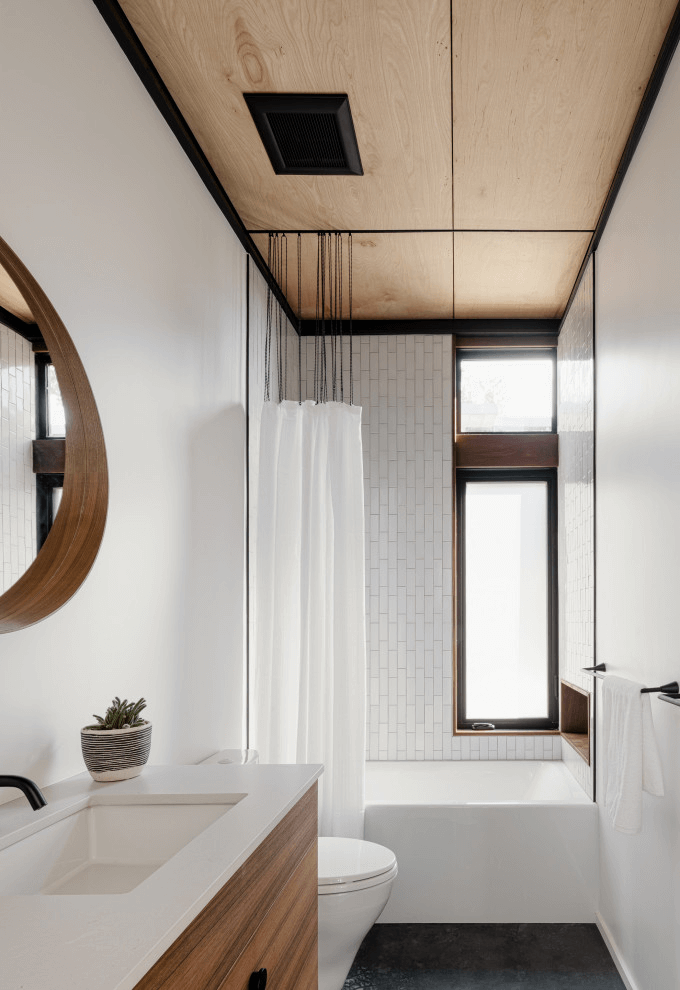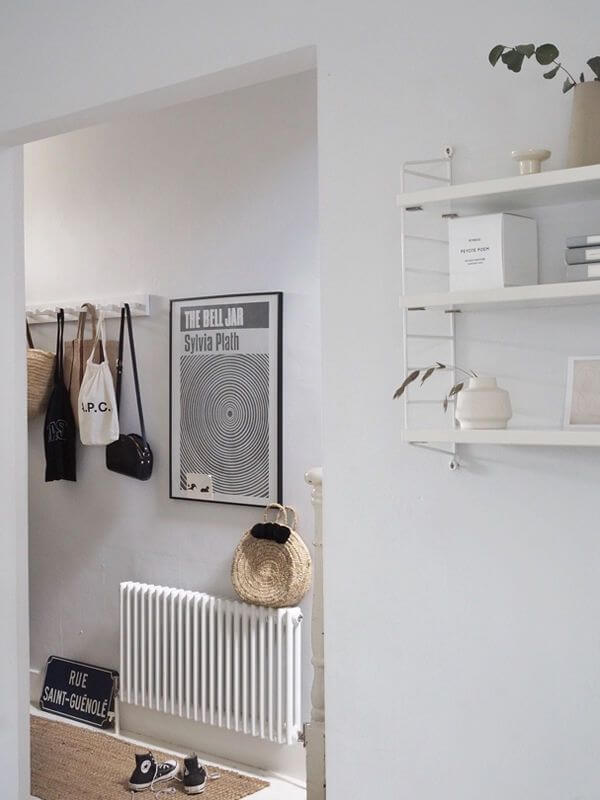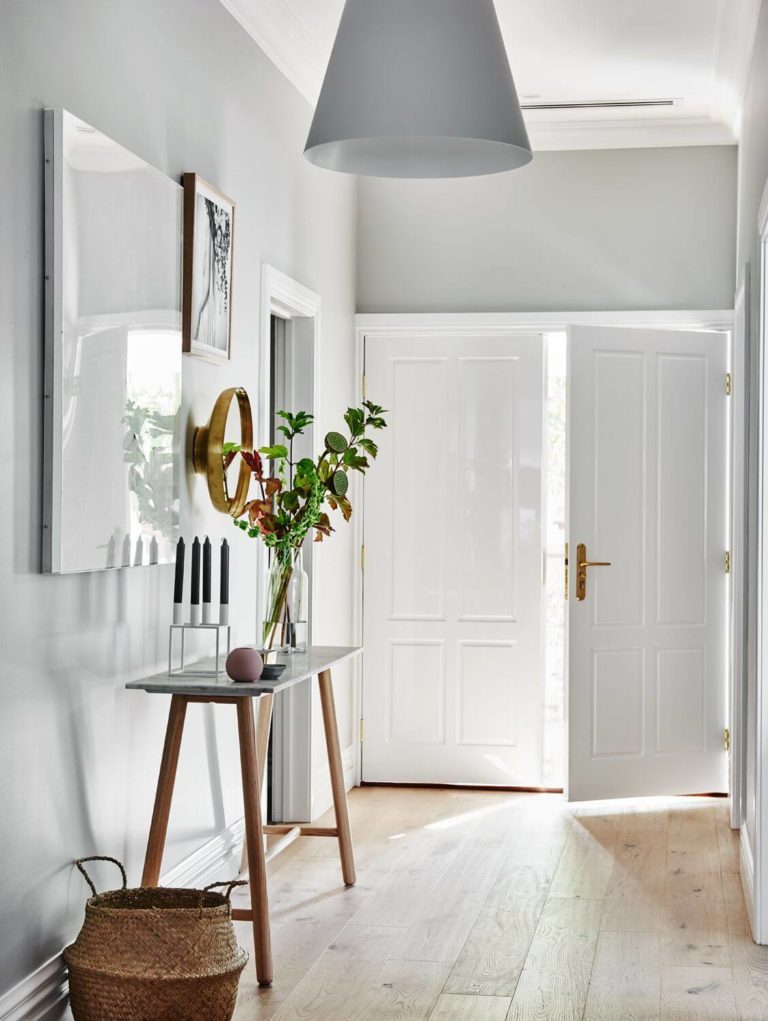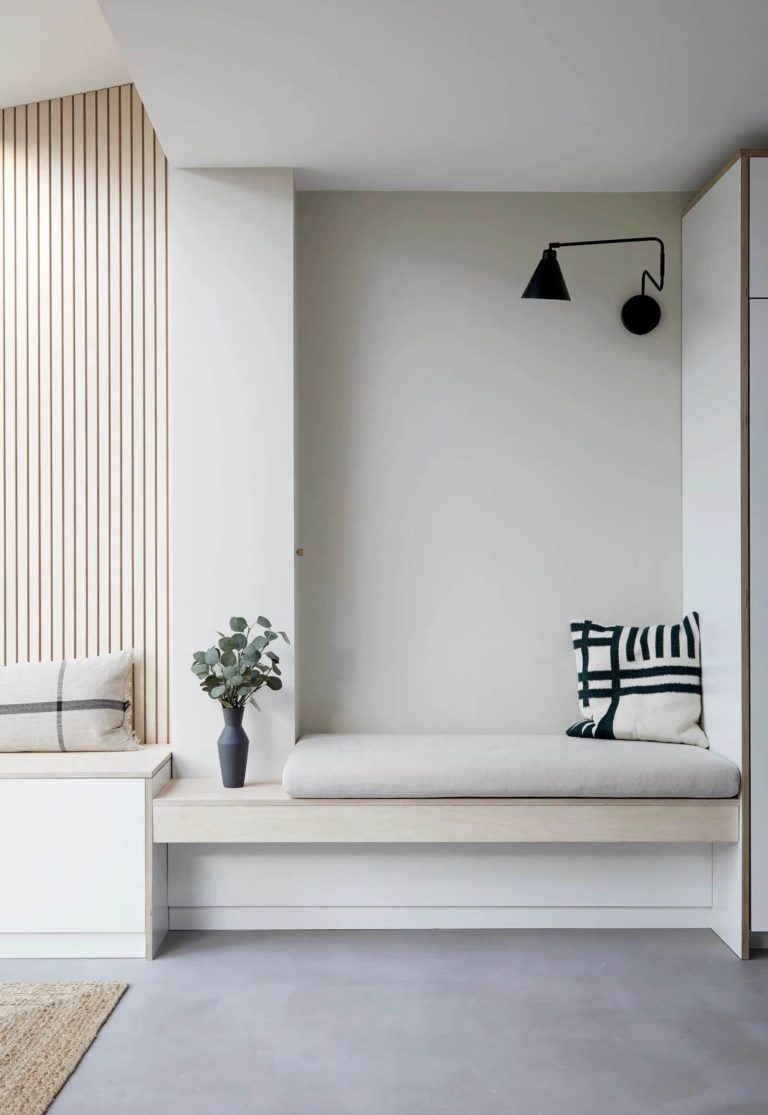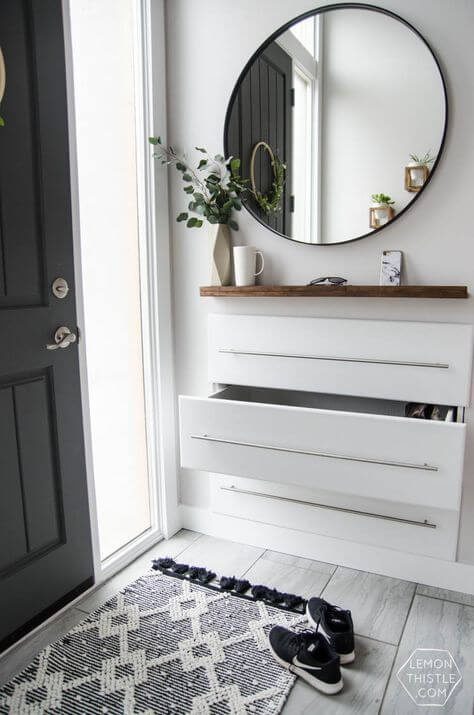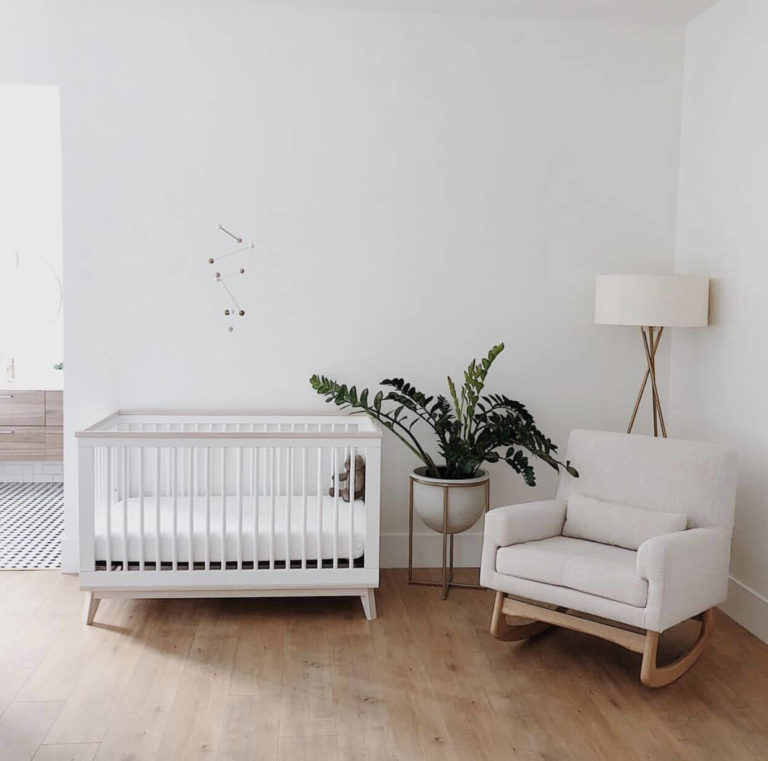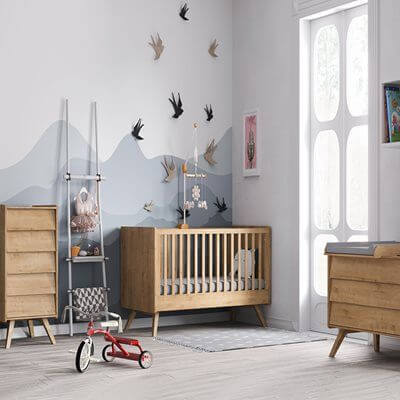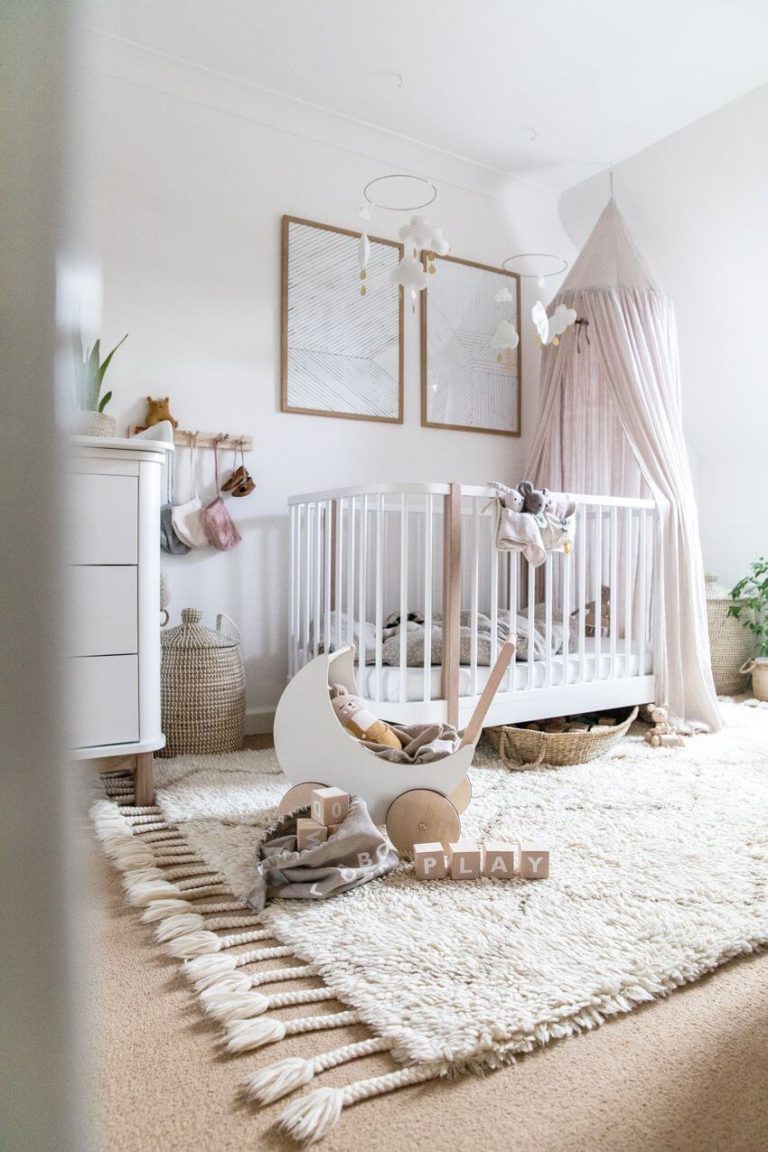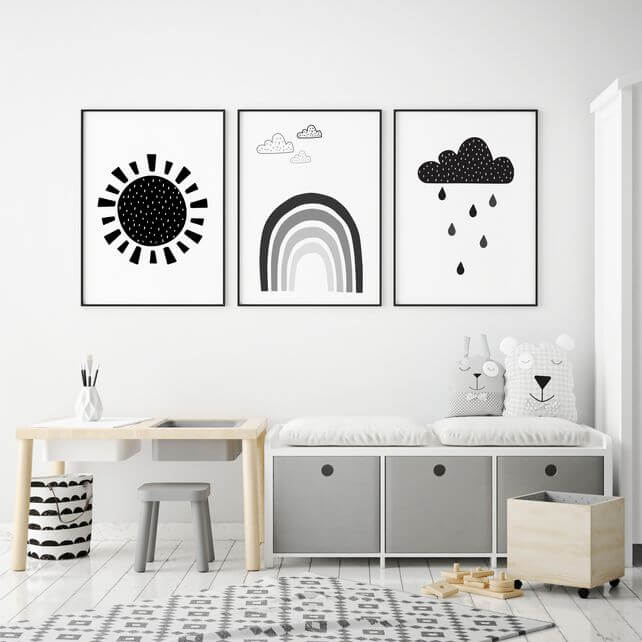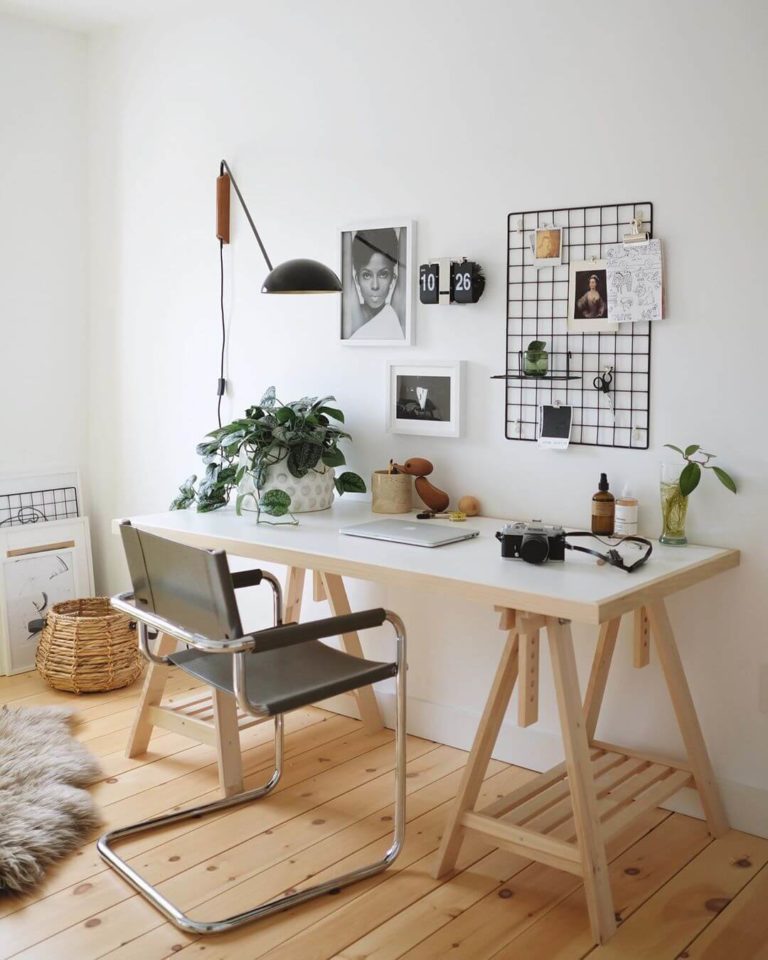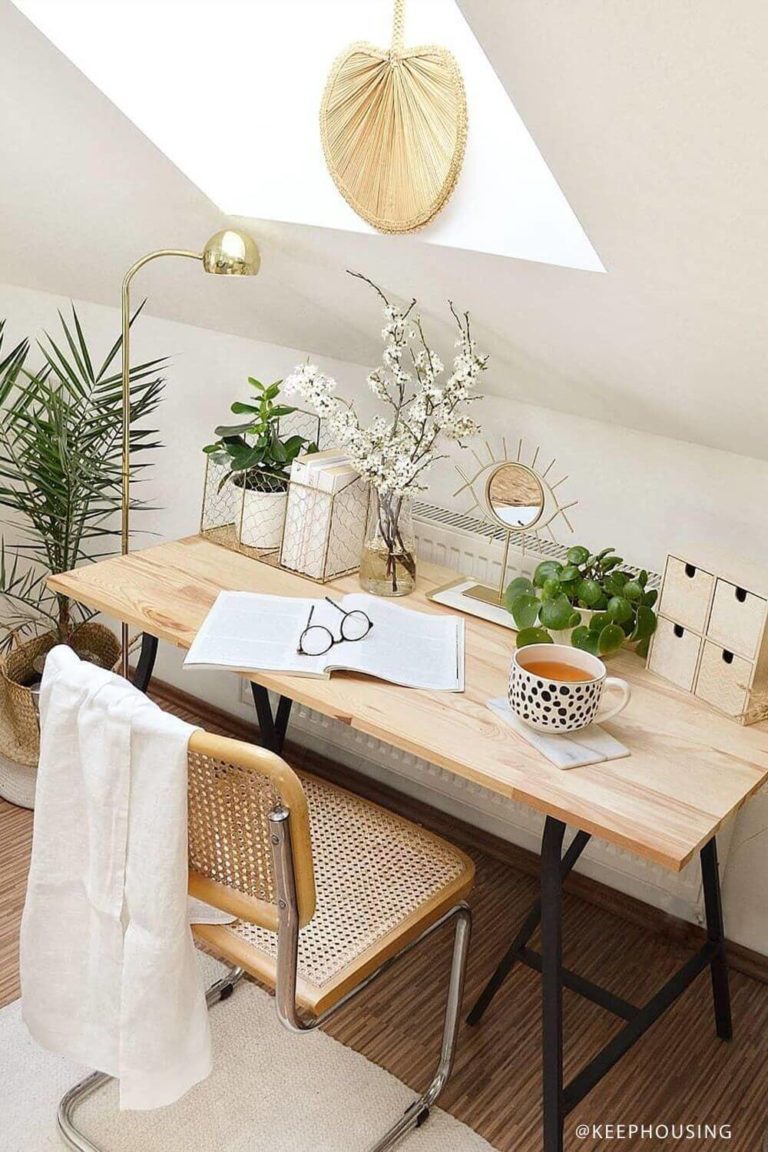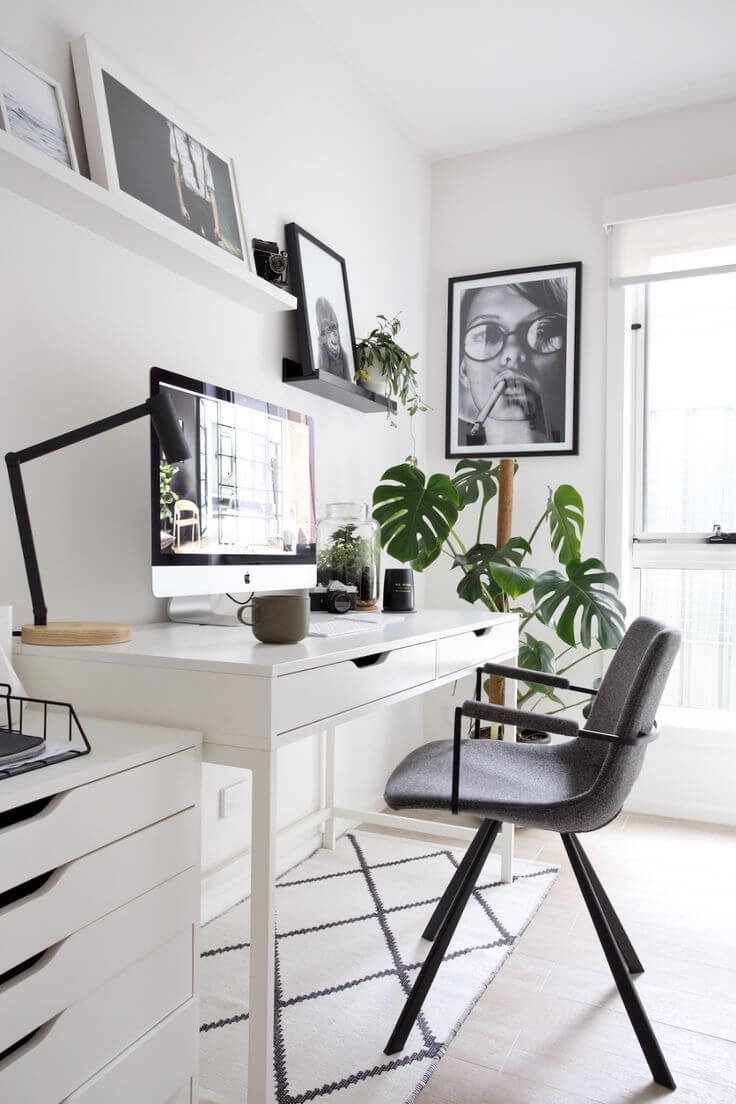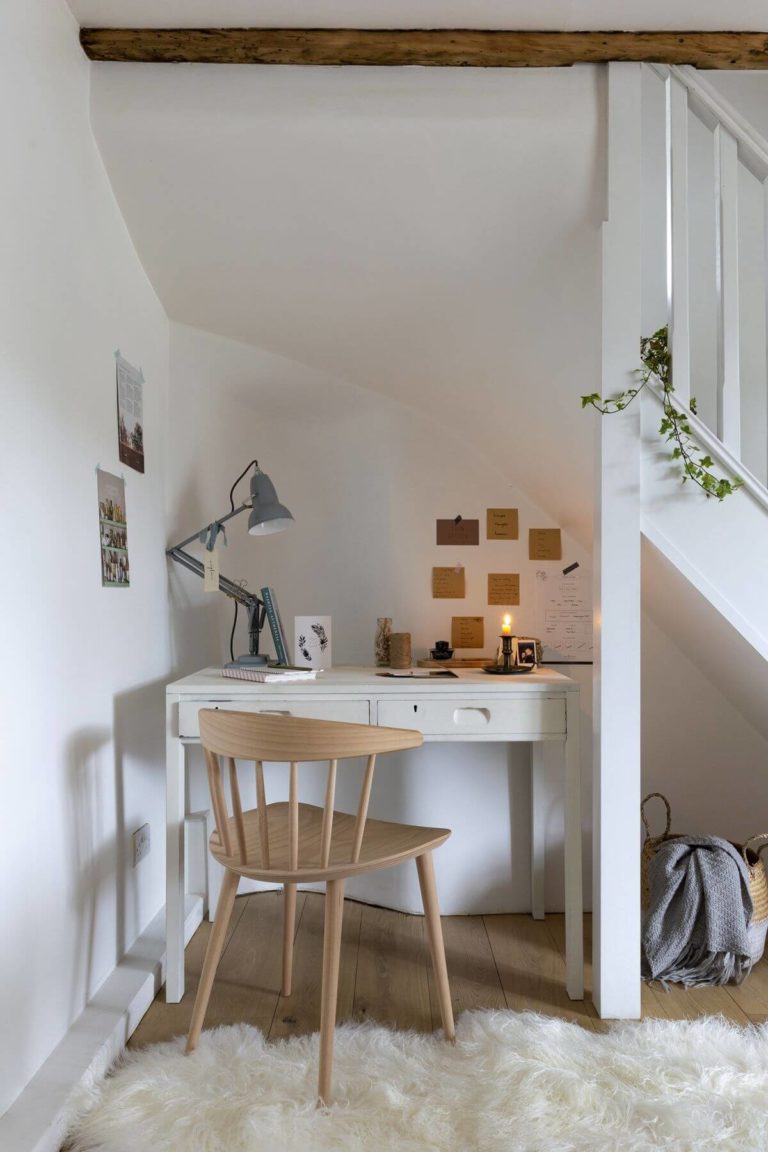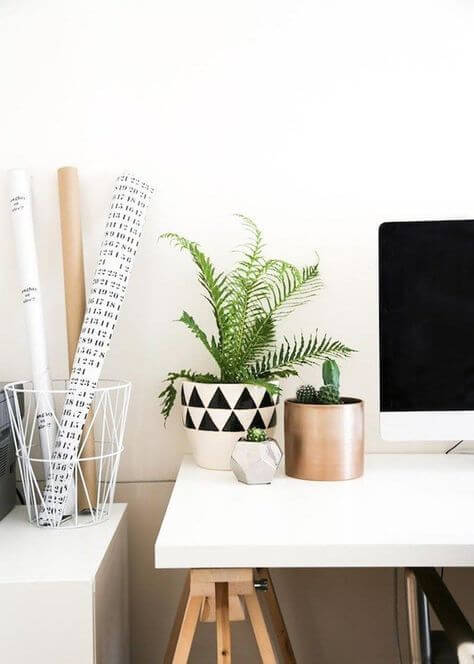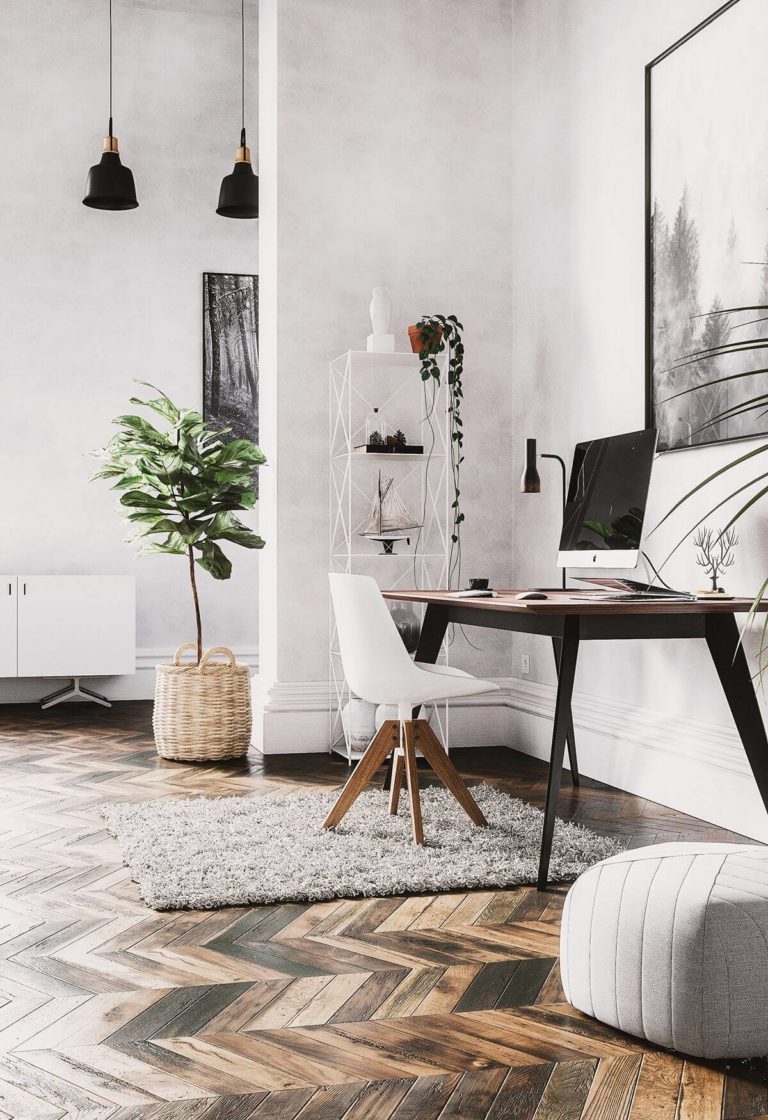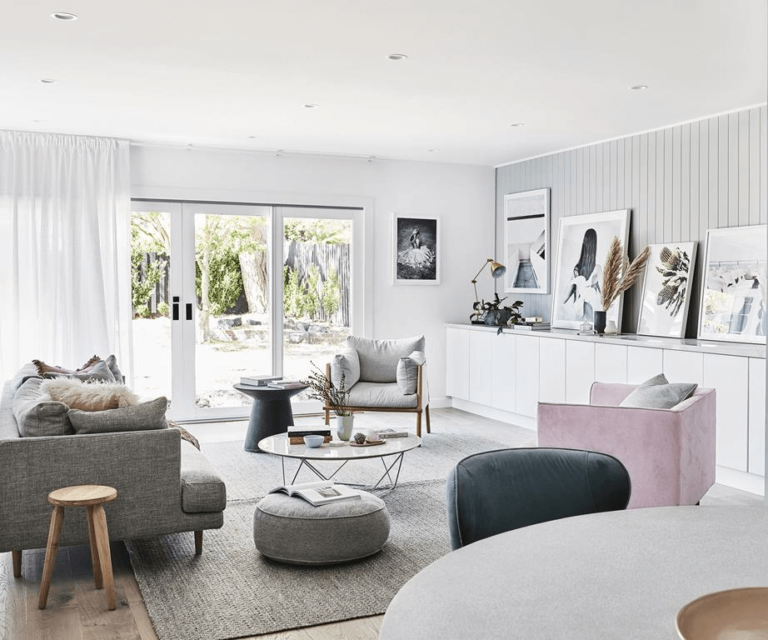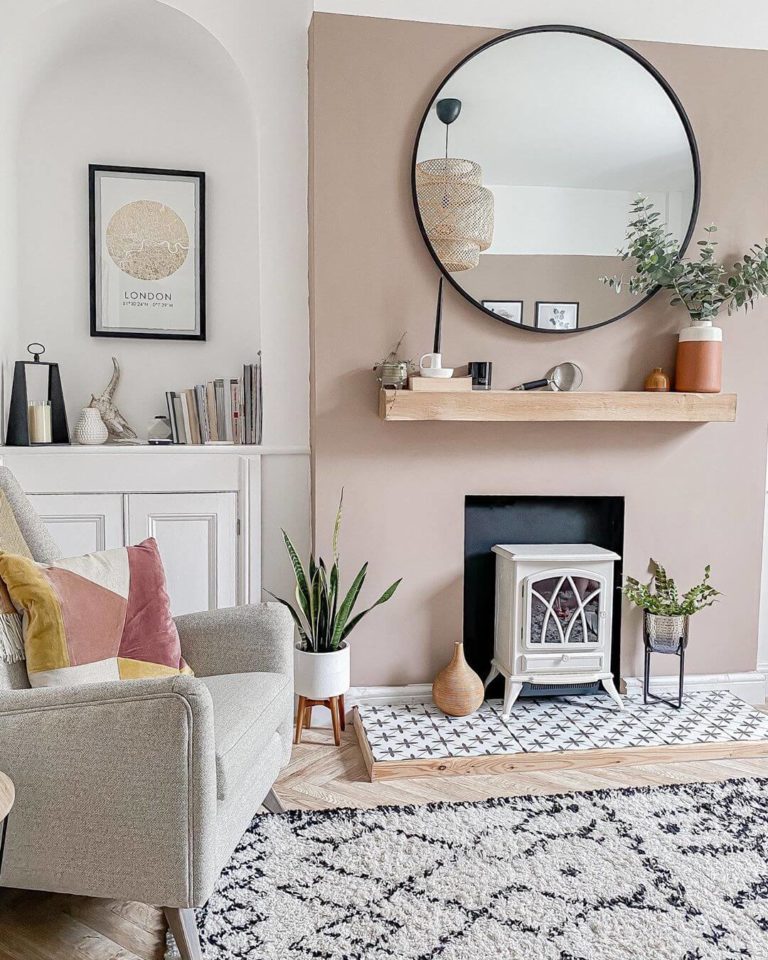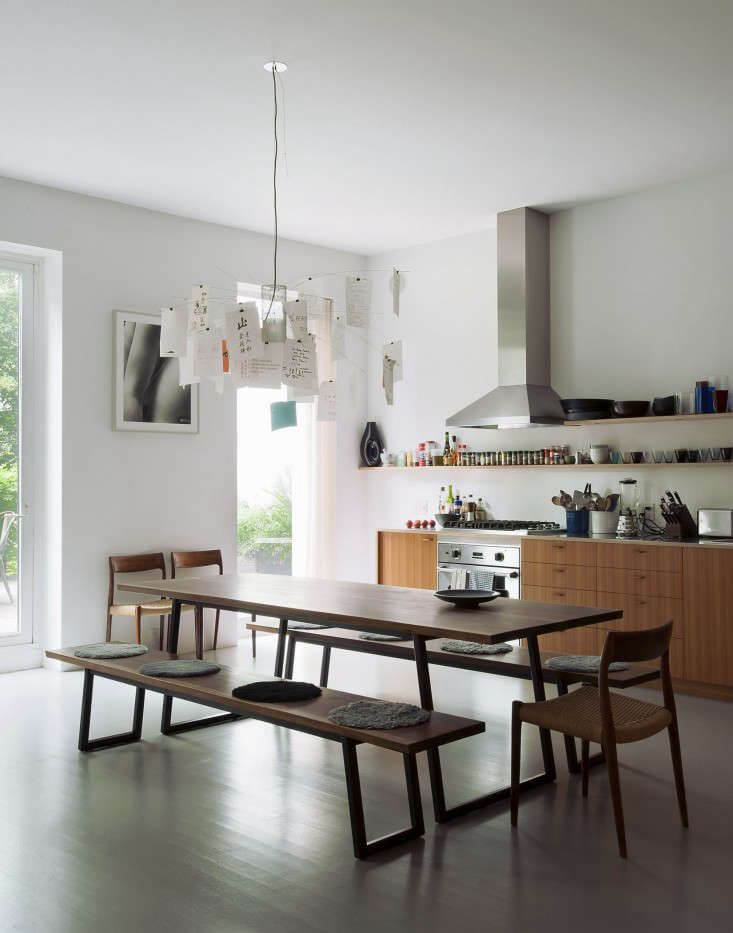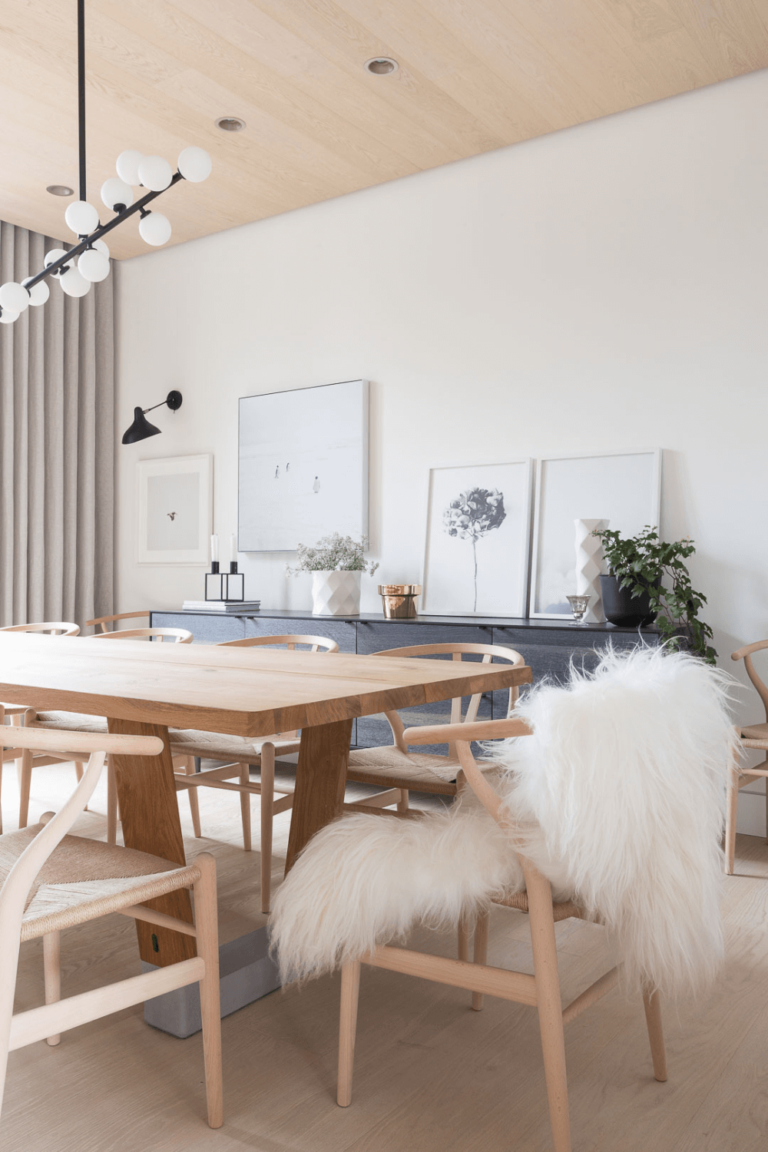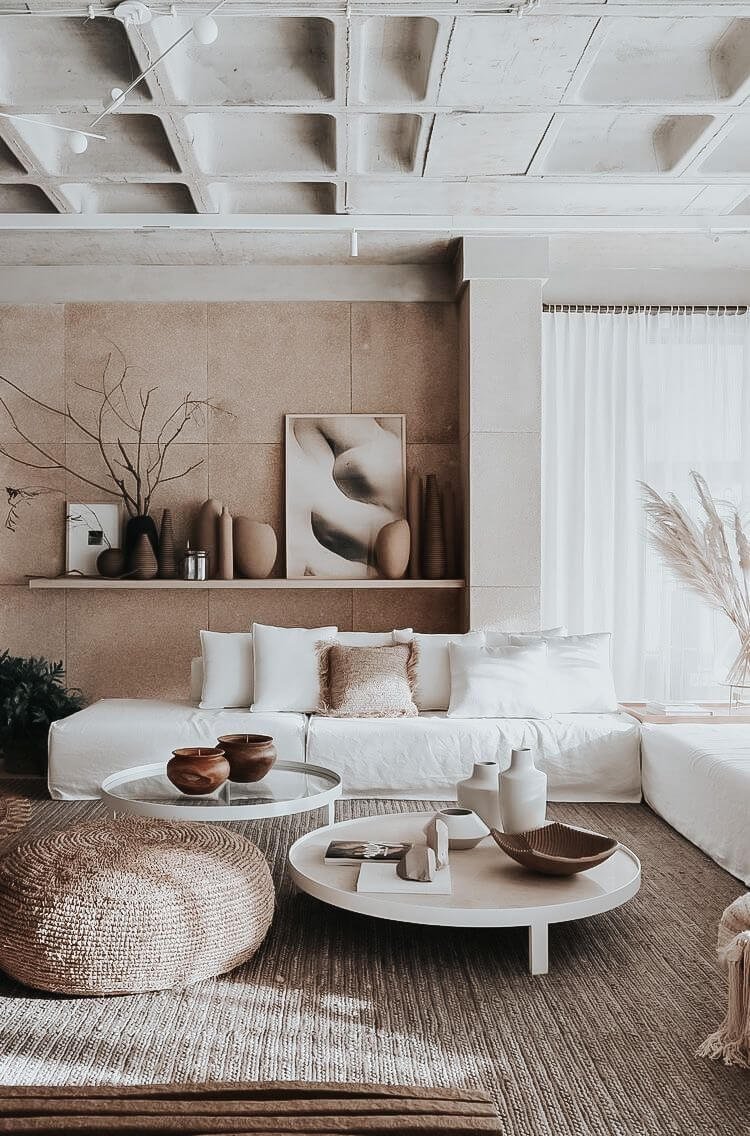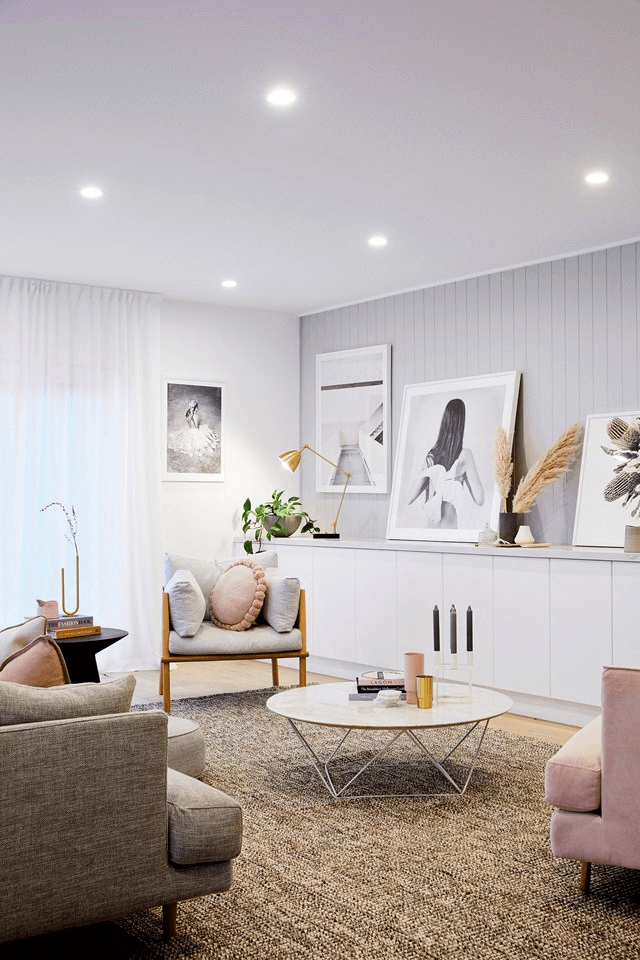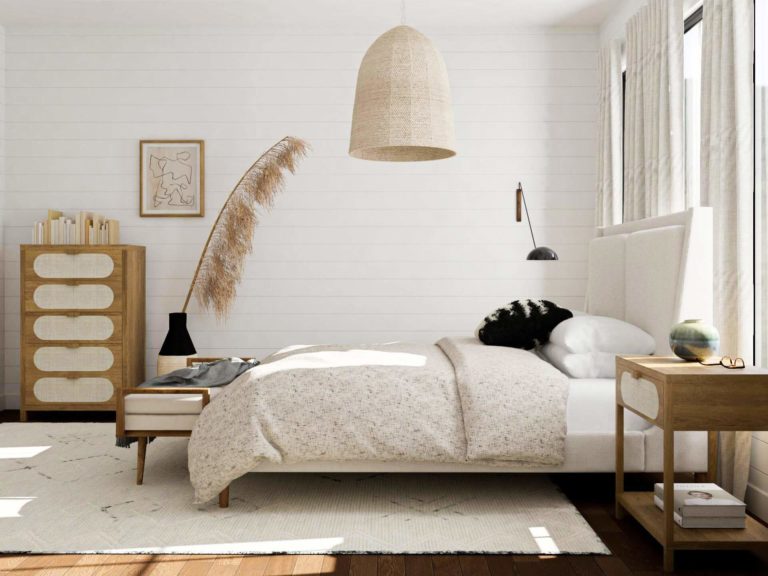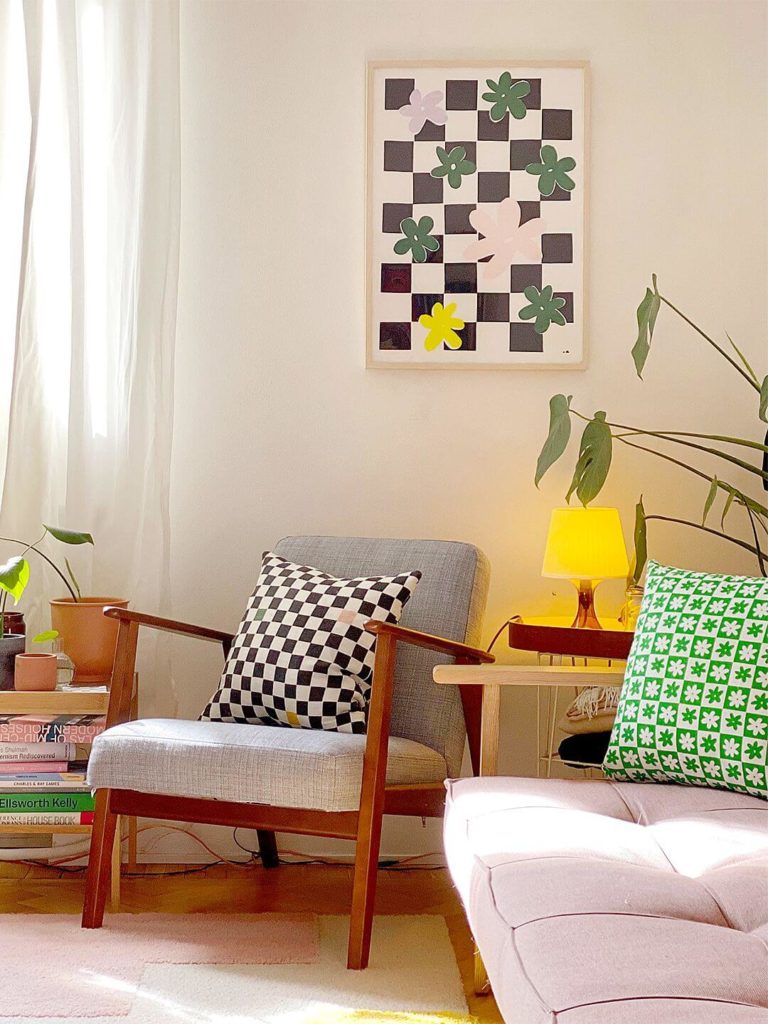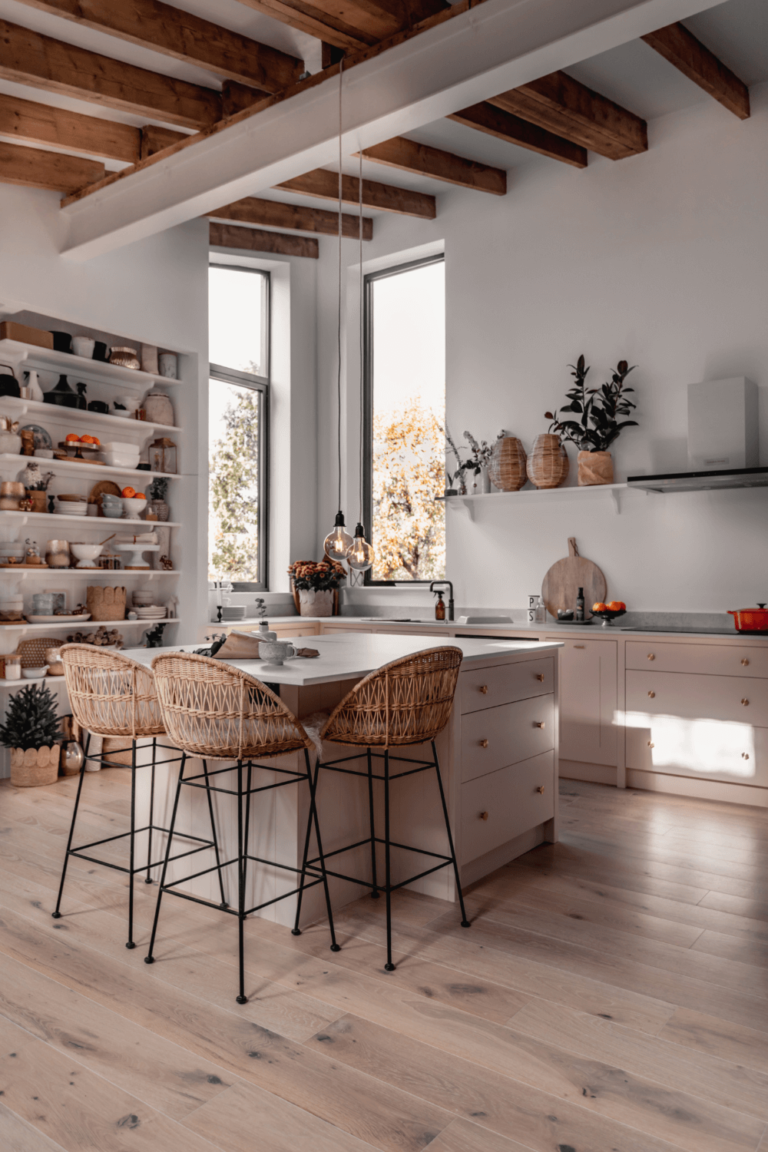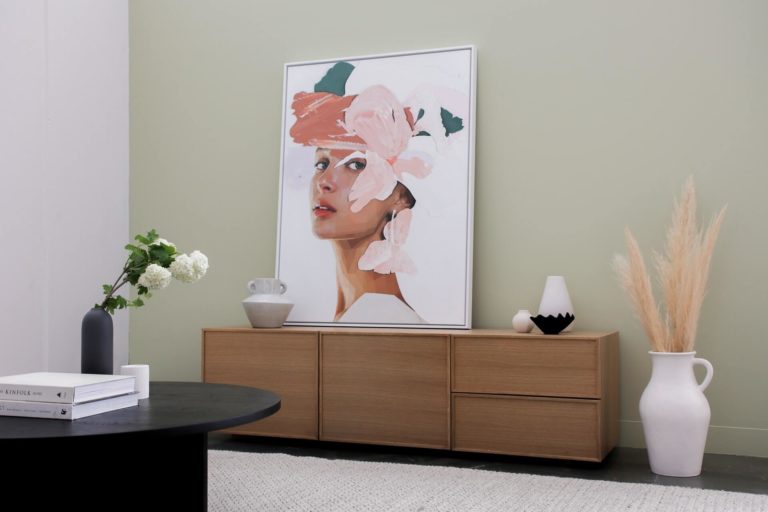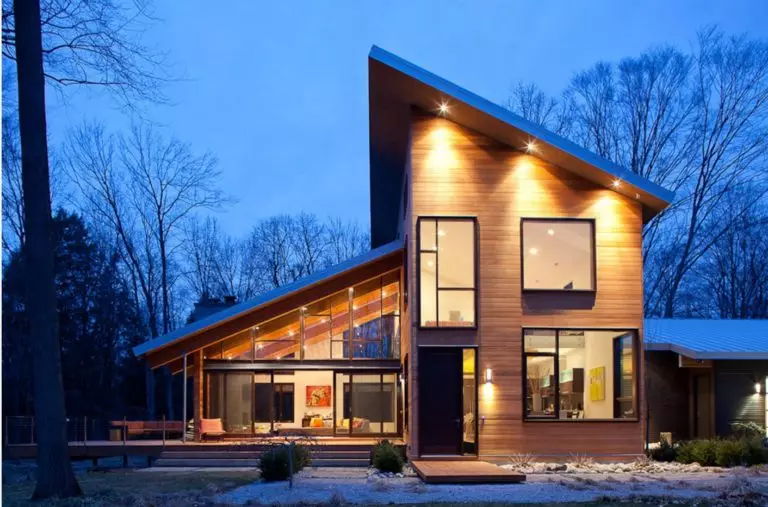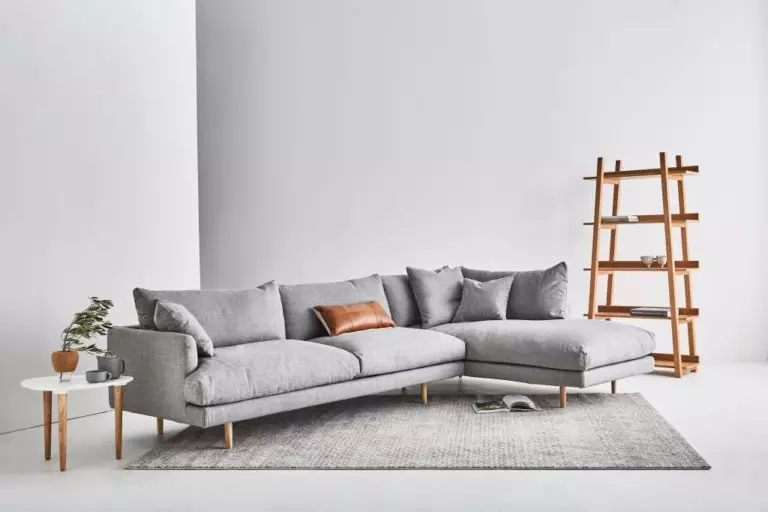Scandinavian style in interior design
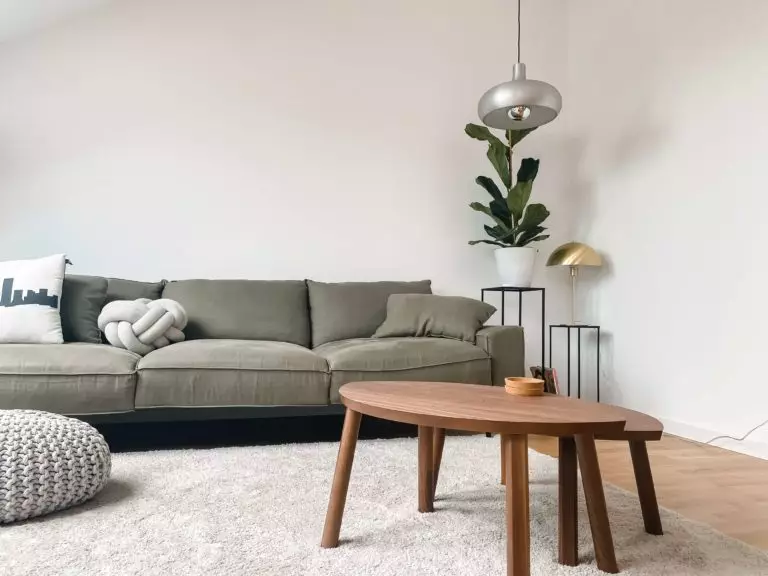
In our articles, we have repeatedly talked, talked, and will talk about current styles. And it would be strange not to discuss in more detail one of the brightest and most popular trends in design today, which we all know as the Scandinavian style. How did it develop? Why did it become a beloved style at an international level? How to create a similar cozy and simple atmosphere in your home or apartment? Let’s discuss this as detailed as possible!
What is the Scandinavian style?
As the name implies, the Scandinavian style in the interior appeared and took shape precisely on the territory of the Nordic countries, including Sweden, Finland, Denmark, Iceland, and Norway. However, it is believed that it all began with Sweden in the distant 18th century.
During this period, King Gustav III went on a trip to France and, of course, was impressed by the luxury of local palaces. Returning home, he decided to decorate his residence with the same pomp characteristic of Rococo and Baroque. However, he faced two serious obstacles – the lack of funds for such a scale and the predominance of too dark and deep shades in Baroque, which were making the interior seem gloomy.
The Versailles-inspired style was revised in favor of an affordable option and adapted to the local climate. This is how the style known as Gustavian, honoring the King, was born. You can still see examples of this design, characterized by a light natural palette, white walls, elegant furniture with flowing shapes, wood carvings, and spectacular lamps in combination with plain natural textiles.
The creation of the Scandinavian style in the version in which we know it today took place after the end of the Second World War. Residents of European cities affected by the hostilities needed new housing. Therefore, factories had to look for solutions to manufacture functional, affordable, and quick-to-produce furniture. Young designers joined the task, bringing a special aesthetics to the appearance of furnishings – among them Arne Jacobsen, Paul Henningsen, and Hans Wegner.
Fundamental principles and key elements
The most important idea behind the Scandinavian style is moderation in everything and harmony with yourself, nature, and others. Rejecting luxurious goods and extravagant options, in this case, is completely deliberate: the inhabitants of Northern Europe are categorically against competing with others from the perspective of wealth and status since the absence of such a contest is the basis of happiness and peace.
In addition, the principles of Scandi are closely related to the philosophy of hygge, which originated in Denmark. This concept implies coziness; tactile, physical, and psychological comfort; a sense of well-being; and complete satisfaction with life. All this can be ensured within an appropriate environment and surrounded by pleasant things.
The principles of this style developed under the influence of the earlier mentioned ideas. Let’s discuss them from a narrower perspective!
Colors and prints
Color preferences in Scandinavian interiors are largely dictated by what scientists call geographic determinism. Let’s make it clear! Climate is the one that has a serious impact on the environment in houses and apartments. A small amount of sunlight, only a few warm days throughout the year, cloudy weather, harsh northern landscapes – all this often leads to conditions close to depression.
Scandinavians search for solutions right inside their home, trying to set an environment that is filled with light and comfort as much as possible. That is why paints with a high LRV are chosen here, and the following shades have become the key colors for the Scandi palette:
In the past few years, the popularity of bright accents in Scandinavian design has significantly strengthened so that you can find elements in azure, mustard, dark blue, and sometimes coral. Particular attention is paid to details and prints in black, which can set the rhythm and make the interior more expressive without any frills.
As for prints, they make their invaluable contribution to the comfort and originality of Scandi. Most often, you can find geometric and ethnic prints and motifs from Scandinavian mythology.
Finishing
Creating a base for a Scandinavian interior does not require exclusive materials, but they must certainly be of high quality. In addition, you should avoid excessive pretentiousness, complexity, relief – everything is extremely simple, calm, soft, and natural.
Walls
Plaster and paint are the first options to consider for setting the foundations of a Scandinavian interior. Smooth walls painted with light paint with a high coefficient of light reflectance – what could be more appropriate? At the same time, more complex solutions are allowed – plastered bricks, wood paneling, or light artificial stone inserts. Scandi wallpaper is not used often. This is an impractical solution in the authentic interiors of Northern Europe with its high humidity.
Ceiling
Scandi-style ceilings in houses and apartments do not differ due to a minimal decorativeness, so you can’t go wrong if you whitewash them or paint them in a light color. It is also possible to use stretch ceiling structures – however, always with matte canvases.
Flooring
Everything is just as obvious with flooring: natural wood or high-quality materials with the same texture are the only possible solution. Parquet, board, or laminate are chosen in the most natural and warm golden shades, although light cool tones are used as well.
Furniture
The first thing the fans of the authentic Scandi should note in terms of furniture is the amazing patriotism of the inhabitants of Northern Europe. They purchase furniture from their designers whenever possible and remain faithful to the models created several decades ago. The Egg and Swan chairs, the Stool 60 stool, the Ant and Fanbyn chairs are just a few examples of models that are still being bought, even if such designs are already about half a century old.
As for the features of Scandinavian furniture in general, you should, firstly, pay attention to simplicity, maximum comfort, and natural materials. Incredibly comfortable sofas with laconic shapes and monochromatic upholstery, open shelving, and chairs with unpainted wooden legs, soft ottomans, and deep armchairs allow you to achieve that very coveted hygge. Furthermore, Scandi does not welcome large and bulky cabinets, while ergonomic and hidden storage systems are much appreciated.
If you want to study in more detail the features and principles of Scandi-style furniture, you should take a closer look at the catalogs of major Swedish manufacturers – Furninova, Sits and, of course, the well-known IKEA.
Lighting
There should be a lot of light in an apartment or house decorated in a Scandinavian style, including artificial light that can compensate for the lack of daylight, particularly during winter. That is why a variety of lamps are widely integrated, effectively illuminating functional areas in particular and the whole house as a whole.
Lighting fixtures and floor lamps with simple geometric shapes of metal or glass are peculiar to this style. There is also an unconditional variation in the design of the bases: in such interiors, you can see models of “industrial style” on metal legs, racks and brackets, and simple suspension bulbs on black or white cords, and even very cozy options with light textile shades made of roughly cut snags or logs.
Textiles
Textile elements in the Scandinavian interior have a particular purpose – they warm up the environment and add coziness. There is an abundance of such elements in Scandy spaces, but this makes the atmosphere even more charming and natural. Particular attention is paid to plain curtains with a natural wool texture, linen, and cotton (Roman blinds can also be considered), large knitted woolen blankets with tassels, pillows with ornaments or bright colors, and, of course, carpets – monochromatic, with a homespun pattern, or a worn effect, as if made out of plant fibers.
Decor
Considering the principles of simplicity, functionality, and equality, the Scandinavian style does not welcome overly spectacular decor or excessive amounts of decorative units. However, there are certain elements that are simply necessary for the completeness of the interior and the very hygge, which we have already mentioned several times. In addition to blankets, pillows, the list of such items includes:
Hygge also welcomes candles in a variety of glass, metal, and ceramic candlesticks, as well as wooden figurines with folklore motifs. Well, on winter holidays, Scandinavian interiors are completely transformed into something fabulous, thanks to the abundance of spruce wreaths and branches, luminous garlands, traditional toys, and themed textiles.
Scandinavian style in various rooms
Recreating the Scandinavian flavor is possible in absolutely any room. Let’s take a closer look at the features of the arrangement of home premises in the spirit of the dwellings of Northern Europe.
Living room
The Scandinavian-style living room combines comfort, practicality, and tradition of hospitality. The furnishing scheme is classic: a large corner or simple sofa in the center, next to it – a couple of armchairs or soft chairs, a coffee table, and a cozy carpet. If the space allows, you can add open shelves; if not, a small console will be enough. However, don’t overwhelm the space: the more free space in the living room, the more spacious and lighter it will seem. If you’re afraid of voids, try compensating with wall decor or green plants, but not furniture.
Bedroom
The ideal Scandi-style bedroom is one in which you feel absolute peace and tranquility as soon as you pass the threshold. A wide and comfortable bed with a wooden headboard, a soft blanket, pillows (the more, the better), small bedside tables made of unpainted wood, light curtains on the windows – this is the basic formula of a Scandinavian interior for such spaces.
All other elements are included depending on the size of the bedroom and your personal preference. So, a couple of ceiling suspensions with dim lamps and a floor lamp in the corner, a soft, warm rug, and a low chest of drawers will be appropriate. Do you like reading before going to sleep? Better to hang a couple of shelves instead of a cabinet to leave more space. Hidden systems are suitable for storing your belongings, including the drawers under the reclining bed base.
Dining room and kitchen
The Scandinavian kitchen can rightfully be considered the standard of comfort and ease. They are characterized by light wood cabinets, unpainted wood countertops, built-in appliances, and many open shelves with white glazed and plain pottery.
The dining area usually has a round or square table (made of wood, of course) with comfortable and practical chairs and a nice ceiling light above it. Fresh flowers, seedlings in neat wooden boxes, and, if there is free space on the wall, small thematic collages of posters are used as decoration for both these rooms (including the combined ones).
Bathroom
The Scandinavian-style bathroom is simple, functional, and uncluttered. Everything is arranged according to the principles of minimalism: the walls are painted or lined with light tiles (plain or with a geometric pattern), a traditional wooden chest of drawers plays the role of the cabinet under the sink, the above-mentioned wicker baskets are used for storage, and the mirror can be accompanied by a simple frame or without it at all.
In addition, the designers note that Scandinavians are not too willing to choose shower cabins and trays, preferring classic and much more comfortable bathtubs. All this is quite logical: the opportunity to soak in the bathtub seems much more tempting than the prospect of a quick shower.
Hallway
Once you enter a Scandi hallway, it seems like a paradise where light reigns. The only dark accent is the pattern on the tiles on the floor. Everything else – walls, ceilings, clothing racks, consoles, and benches – is usually painted in white tones. One should note that soft shades coupled with wooden accents don’t look emasculated but rather hospitable and inviting. As for lighting, most often, in the hallway, you can see a small lighting fixture made of dark metal – without lampshades, but with a warm and moderately bright glow.
Nursery
Scandinavian families love their children very much and want to offer them the best they can, starting with their first days of life. Nevertheless, they don’t forget about traditional values and unity with nature. It is easy to guess that light colors, natural and high-quality materials, and textiles pleasant to the touch prevail in Scandi-style nurseries. However, there is another very important aspect – the variety of decor.
Learning about the environment, building a sense of security, and a basic trust in the world in Scandinavia are considered particularly important aspects in raising a child. That is why there are so many adorable things in nurseries – custom-made toy boxes with themed designs, carpets with interesting patterns, paper garlands, animal pillows, and fun posters and pictures on the walls.
Home office
A Scandi-style home office is practically the only place where functionality prevails over comfort. Conciseness, rationality, adaptability of the environment to each movement of the owner become the main principles of the design of such an office. Typical furnishings include a large desk, the most comfortable armchair, open shelves, as well as functional ceiling and table lamps. A small rug on the floor, green plants, and discreet, unobtrusive decor can add warmth.
Modern Scandinavian style
Today, experts identify two directions within the Scandinavian style – traditional and modern. The first option is distinguished by a darker palette with a predominance of black, white and gray, a large amount of ornamental textiles, and elements from Gustavian design.
Modern Scandi is already adapted to the current requirements and needs of residents of houses and apartments and, therefore, pleases with even greater democracy, functionality, and contemporary aesthetics. So, it is characterized by the following features:
Scandinavian style: is it trendy now?
Perhaps this question can be considered purely rhetorical since the popularity of Scandi is obvious even to those who are not very interested in design. For at least the last five years, this style has topped the list of the most current trends in interior design. Today, not only the earlier mentioned IKEA but also manufacturers from all around the world offer comprehensive solutions for interior decoration in the spirit of Northern Europe, offering the possibility to select all the necessary elements – from sofas and carpets to coffee tables, artificial flowers, and kitchen accessories.
Why should you try this style?
If it seems that there are too many superfluous things in your life and you need something that would bring more peace and harmony into it, the Scandinavian style is for you. A sense of unity with nature, respect for yourself and others, thoughtful and convenient organization of space – these are just some of the arguments in favor of letting Scandi into your home.
Who is Scandi suitable for?
You can safely assume that the Scandinavian style is your true companion and put your ideas into practice in the following cases:
Scandinavian style in different countries
As we said above, Northern Europe includes several countries – and each of them has its own peculiarities conditioned by the development of culture and the local mentality. Let’s find out how Scandi is felt in different countries and regions.
Sweden
It is the cradle of the Scandinavian style, and therefore, it preserves the maximum purity of principles in decoration, furniture, and decor. Light walls and furniture, a lot of wood, and a minimum of frills – all this creates comfort and a feeling of closeness to nature.
Finland
“Finnish” Scandi seems a little more down-to-earth and austere in comparison to Swedish, but its laconic charm cannot be denied. The key element in such interiors are fireplaces stylized as traditional Finnish stoves (if you manage to install a real hearth, then this is considered the highest class). The decor often contains rough, rustic details, as if created by the northern forest itself – logs, dry driftwood, stumps instead of coffee tables or stools (for the real amateurs). The walls are decorated with wooden planks. As a bright accent, elements including blue and white, as in the national flag, are integrated.
Norway
The traditional style of the interior in Norwegian houses is quite distinctive. And although it is built on the basic principles of Scandi, it has so many special details that it even got its own name – Nordic. So let’s take a look at what makes it so unique!
First of all, you need to know that Norwegians love wood. Indeed, how could it be otherwise in the coldish and wildland of lakes and forests? However, if in classical Scandi it is more likely to be a secondary material, then in Nordic it dominates completely and unconditionally. The walls here are sheathed with wood, and without even considering painting it, the ceiling is decorated with wooden beams, and we don’t even have to mention the floor covering made of timber since it is obvious. There are practically no snowy white and black elements and surfaces. Natural gray and brown tones prevail.
In addition, the Nordic style is distinguished by a huge number of elements that even somewhere make it akin to the Chalet-style – and first of all, these are stuffed animals and animal skins and rough hand-made wooden furniture. However, unlike the interiors of alpine villages, this kind of Scandinavian style looks more severe and, at the same time, natural, devoid of excessive gloss. Coziness is added by a fireplace, textiles with traditional patterns, pottery, and plain woolen carpets on the floor.
Denmark
It is in the southernmost country of Scandinavia that such a well-known style direction as hygge is actively developing. Above, we have already talked about the features of this wonderful philosophy of life, and it should be noted that millions of people around the world like it.
Hygge interior implies the highest degree of mental and tactile comfort, and therefore all its elements are completely subordinated to the need to create it. So, it is characterized by the lightest finish (more often white, less often – in mysterious and foggy light gray tones) and the same furniture, a minimum of right angles and sharp lines and more smooth shapes, very soft and warm lighting, for which numerous candles are responsible and diode garlands. In addition, hygge can boast of an abundance of soft, warming, and textured textiles – fluffy blankets, knitted pillows, and rugs, as well as a large number of wood accessories, wrought-iron lanterns, and wall decor. Decorating such interiors for Christmas is a real pleasure, and therefore, today, they are considered the standard of a festive picture.
Iceland
Scandi in the northernmost country in the region gravitates towards classical solutions but is known for greater simplicity and restraint. There is also a lot of wood, shiplap is often used for wall decoration, smoky gray tones prevail in the palette, and the use of national motives adds an unconditional flavor to such interiors.
The Scandinavian style in the interior is a kind of philosophy that invites you to feel the comfort through restraint and lightness. It is not about the coldish asceticism of minimalism since it follows a completely different path, allowing you to feel happy surrounded by things that are simple and dear to your heart.
